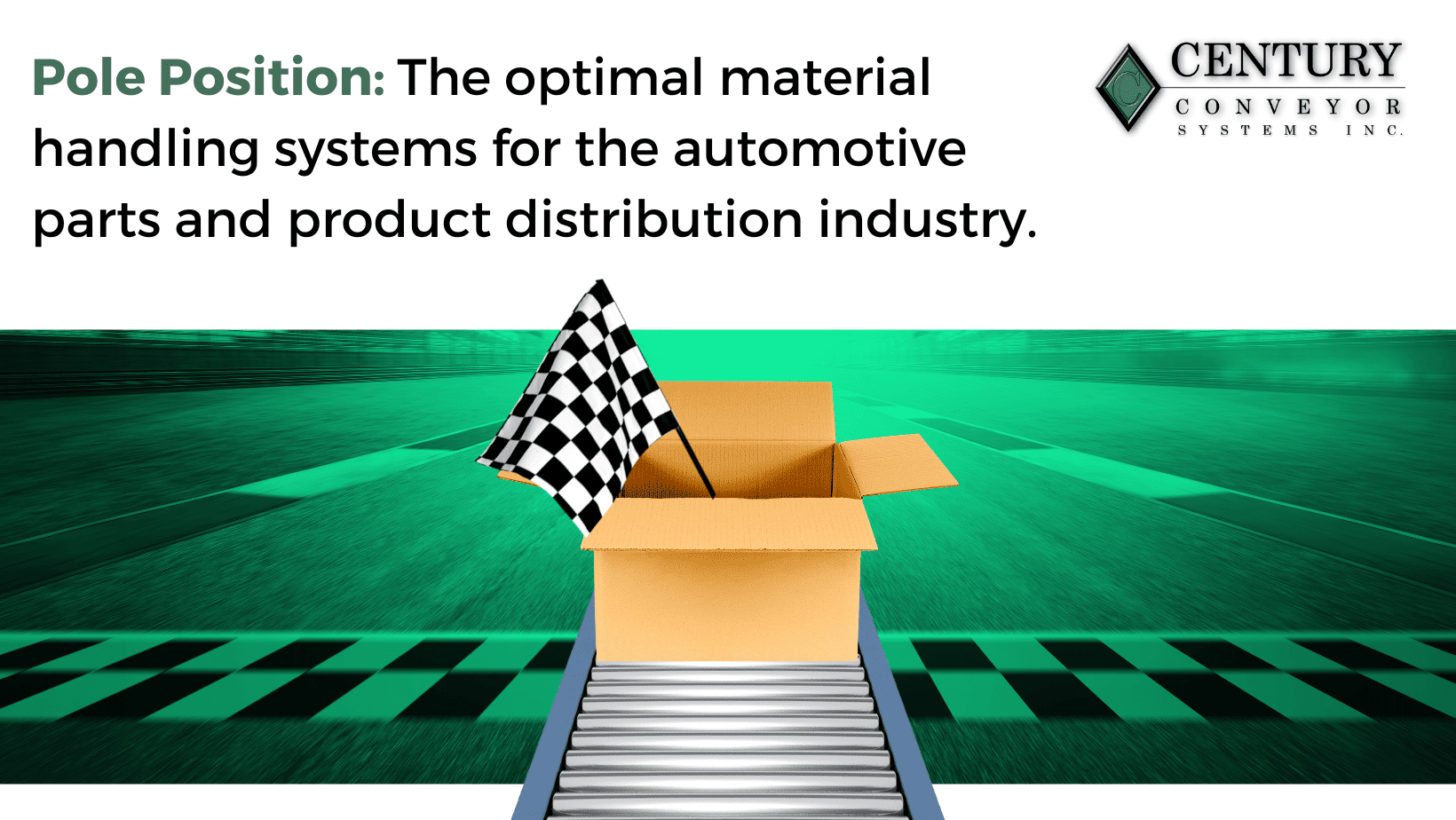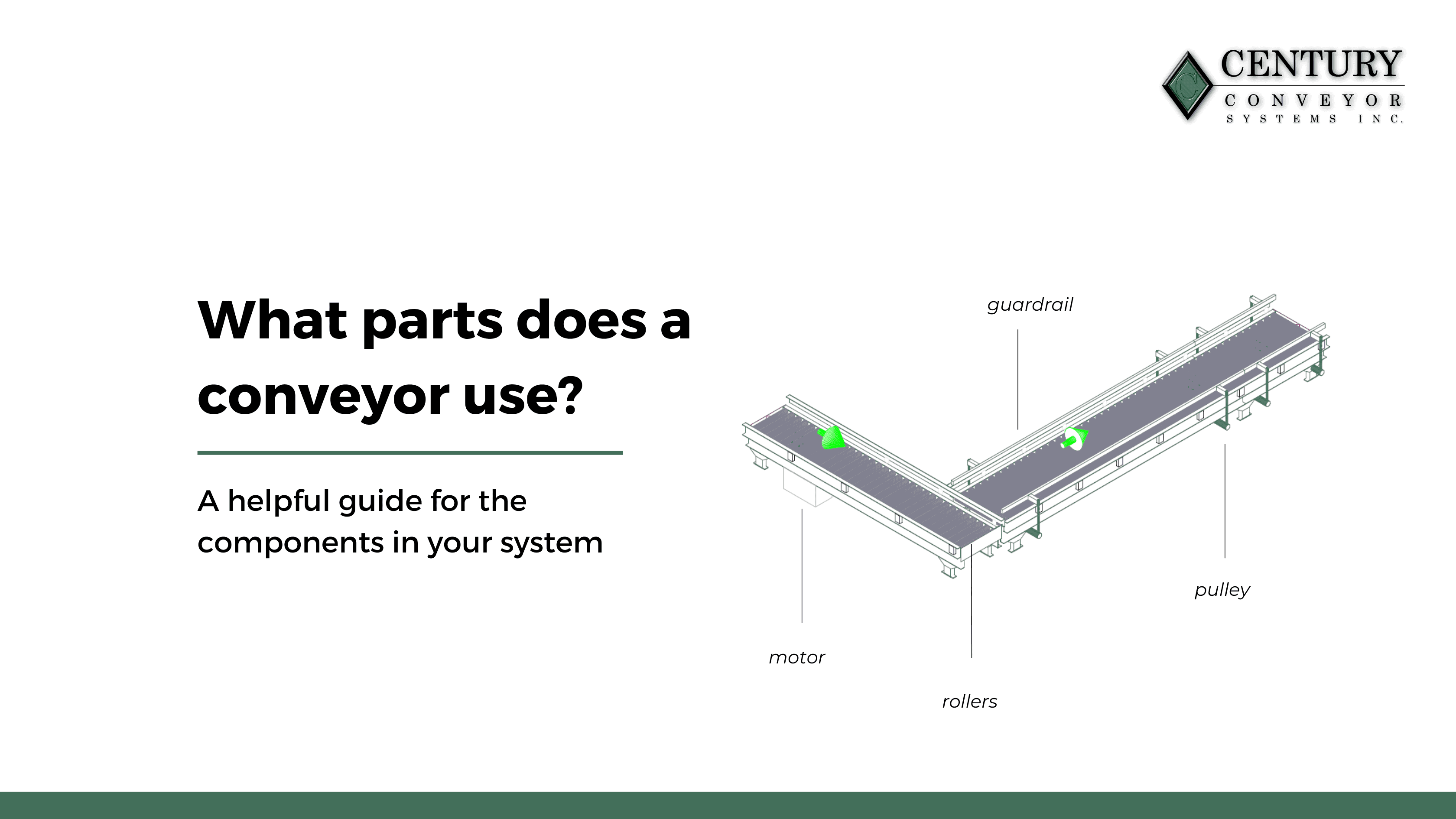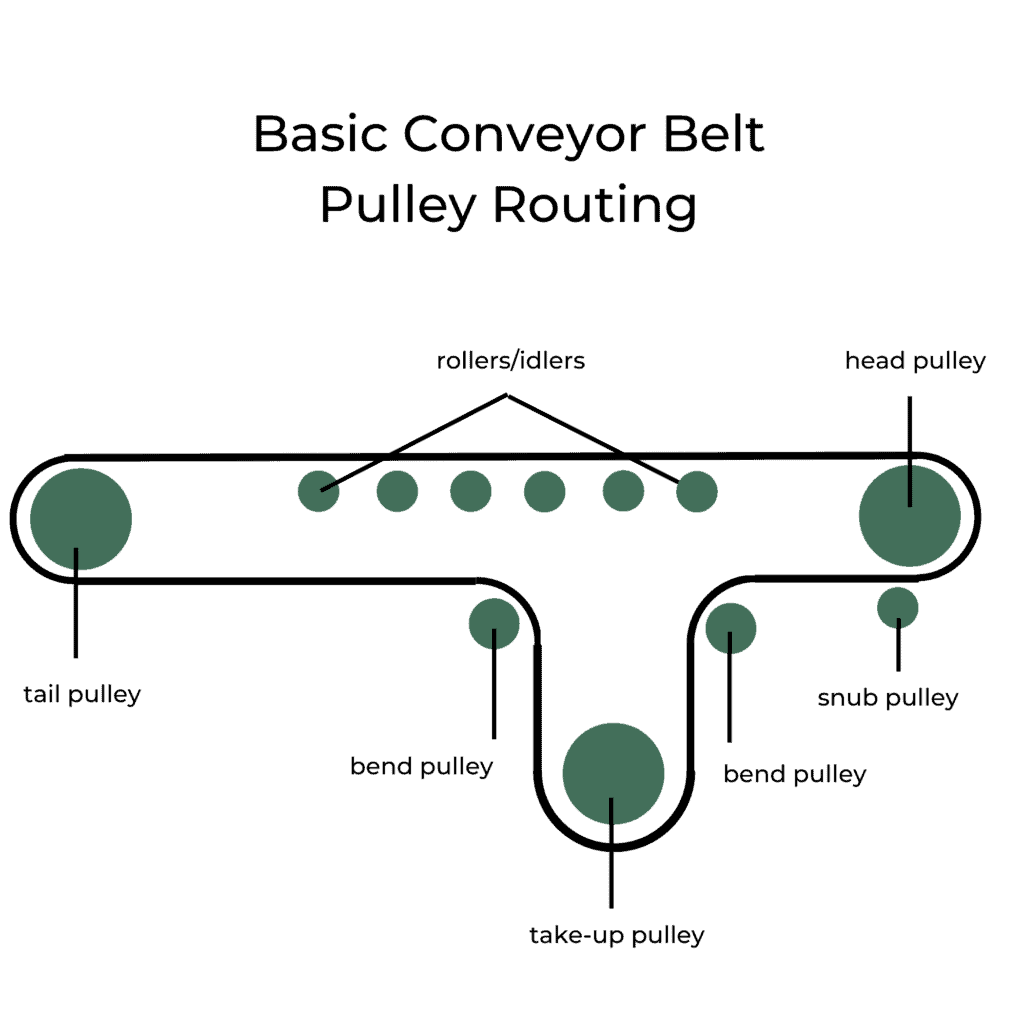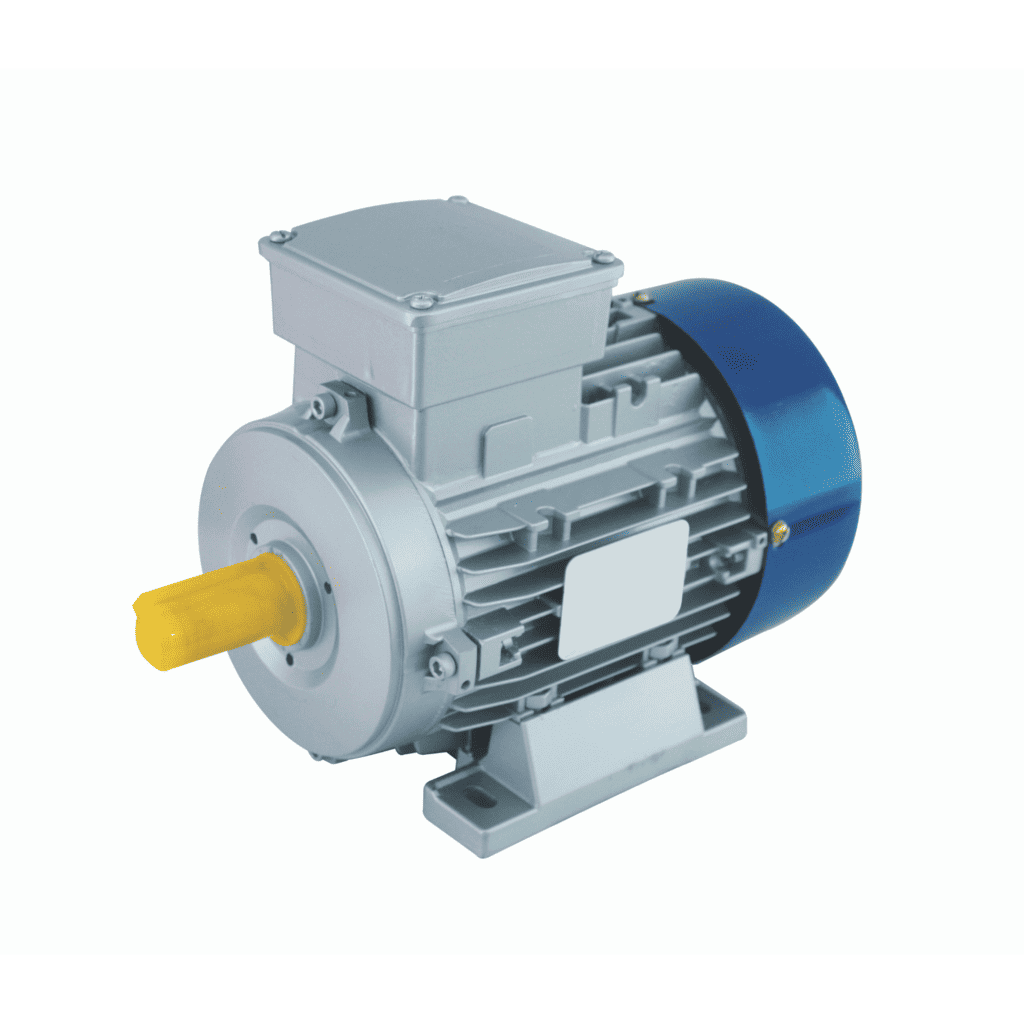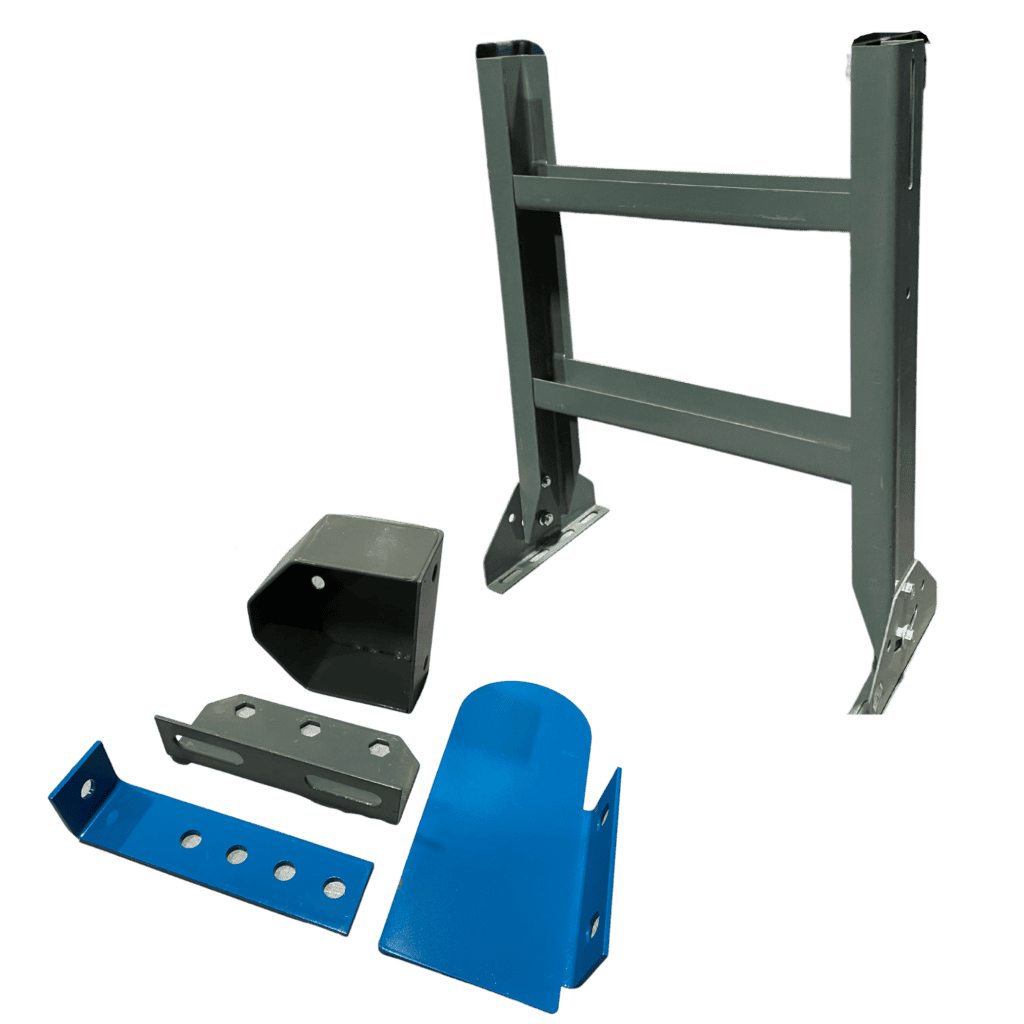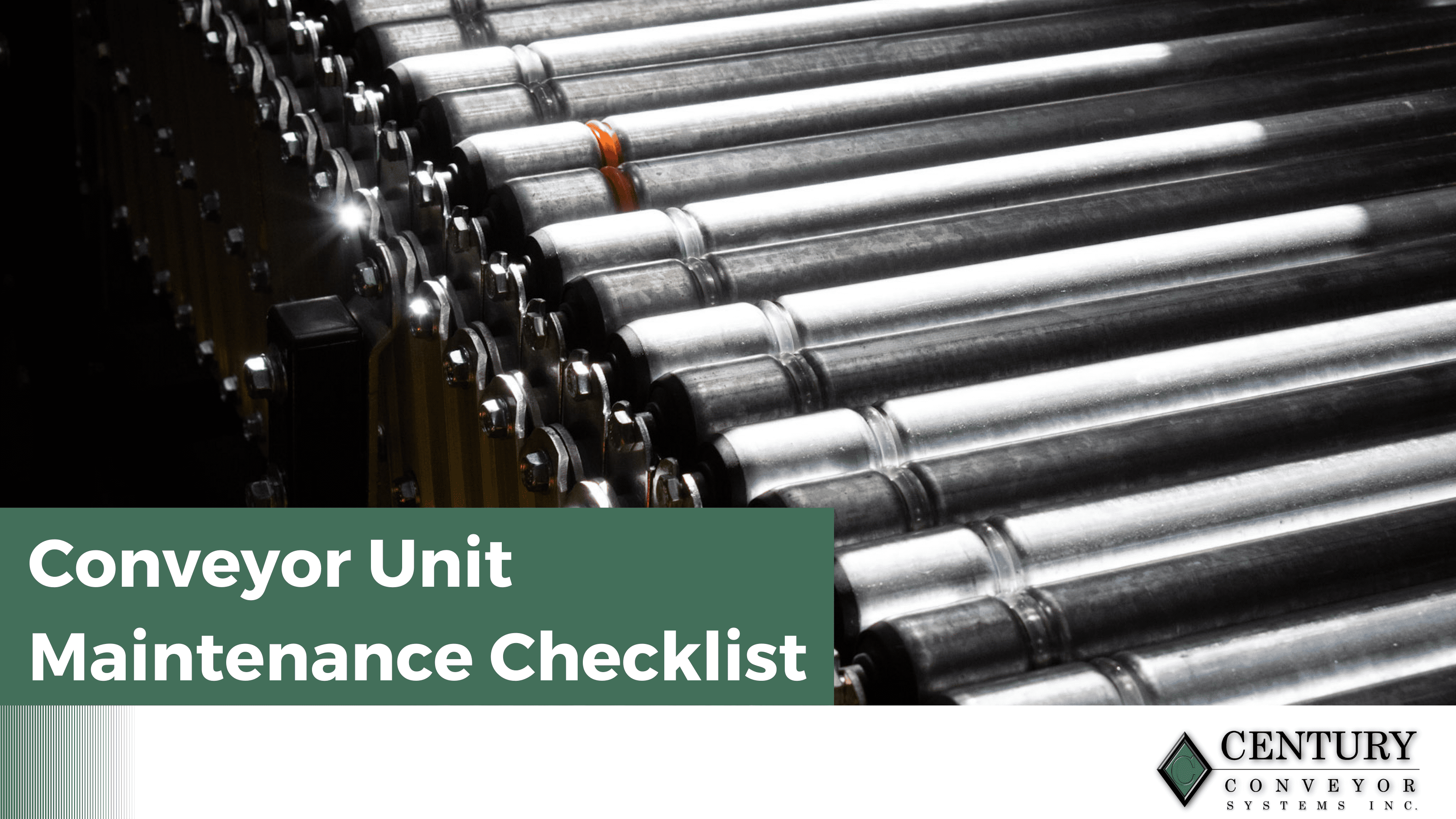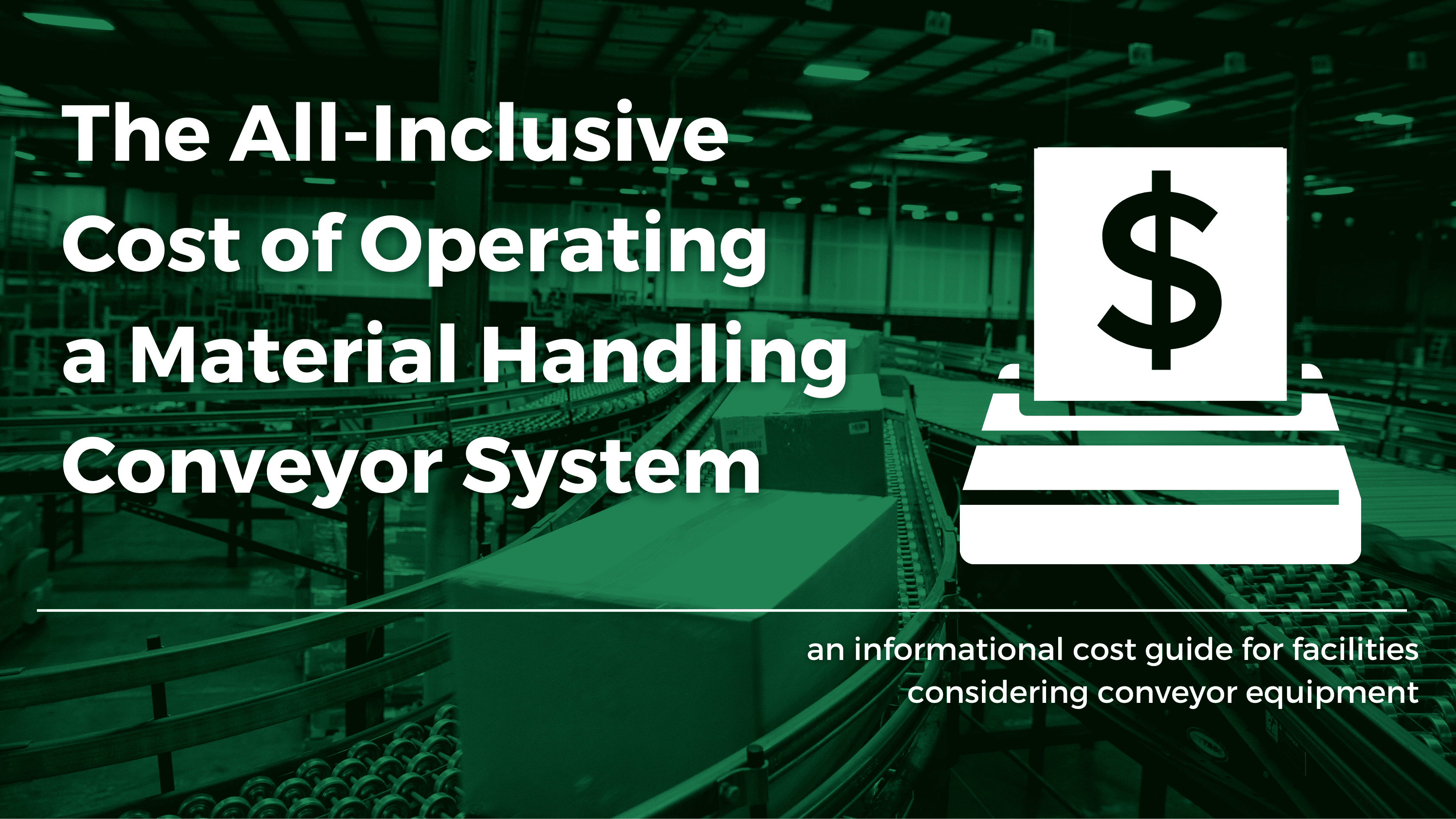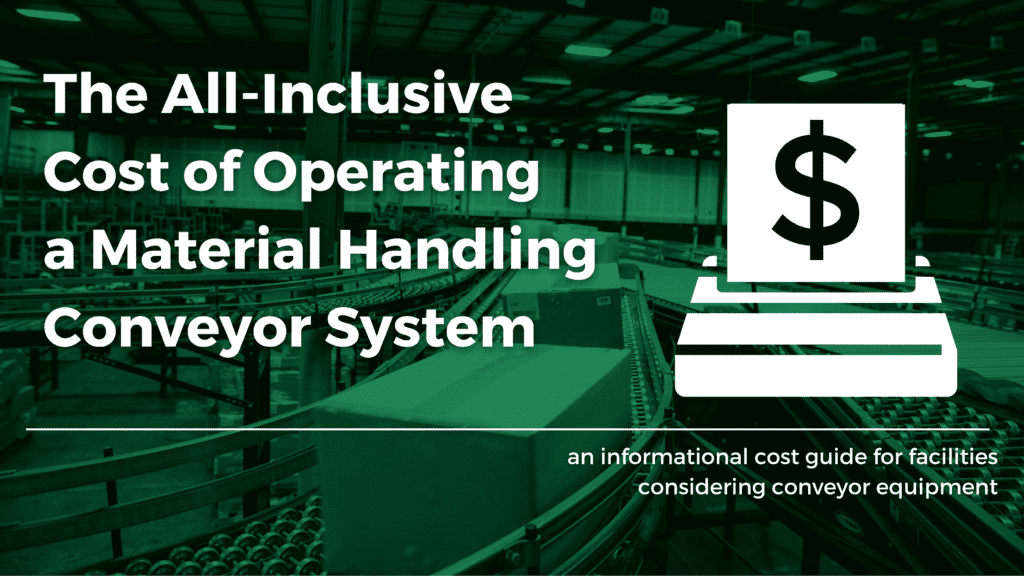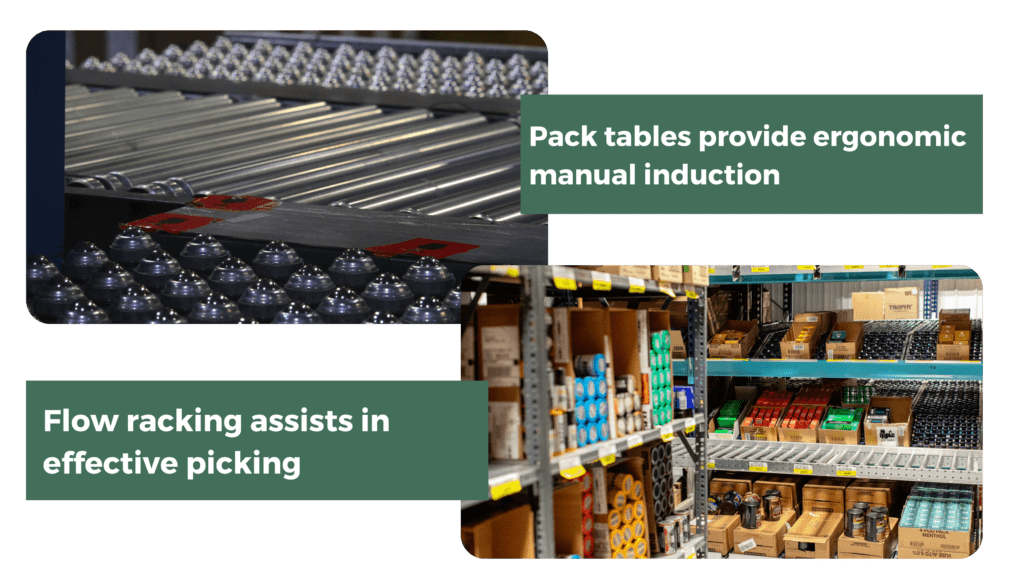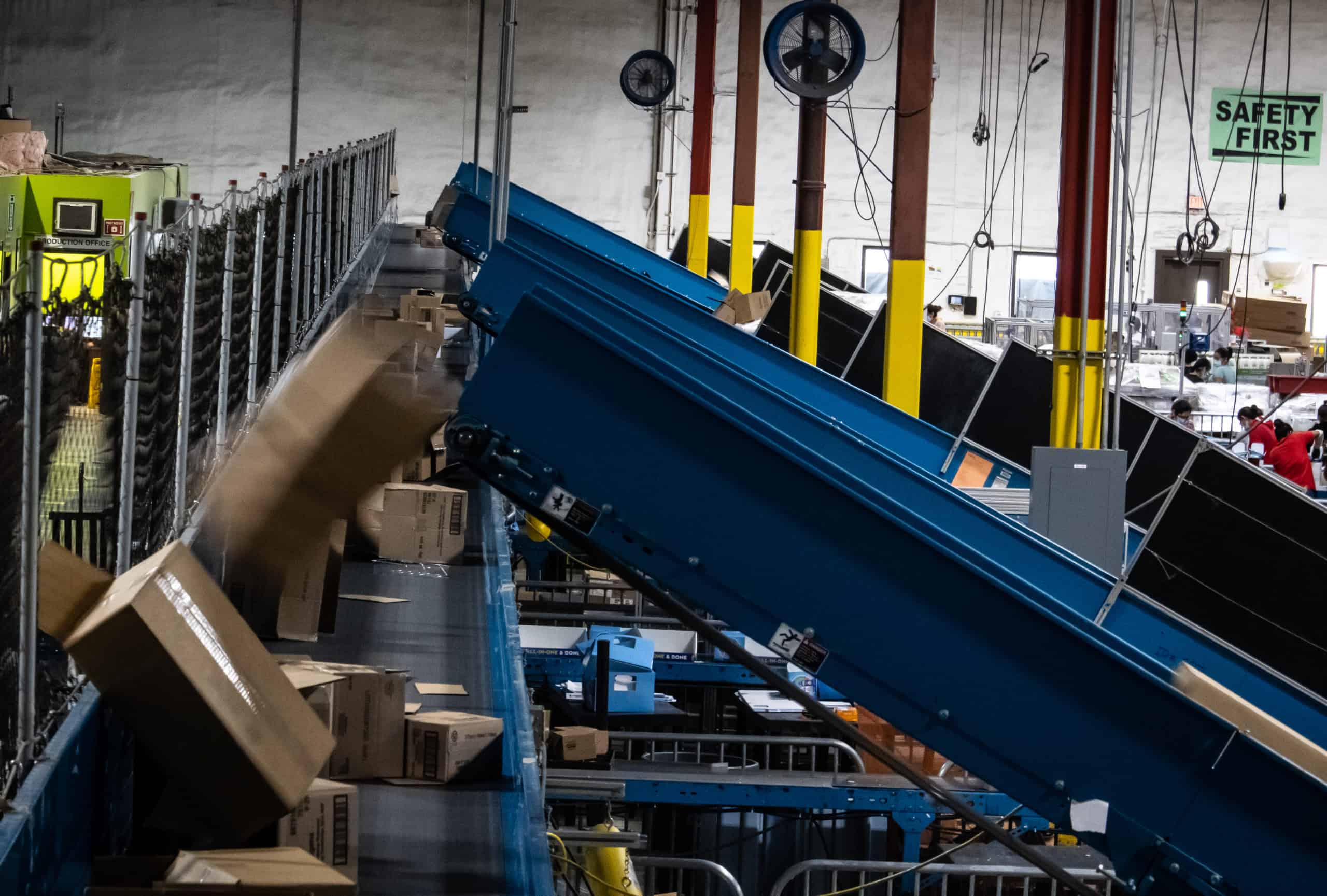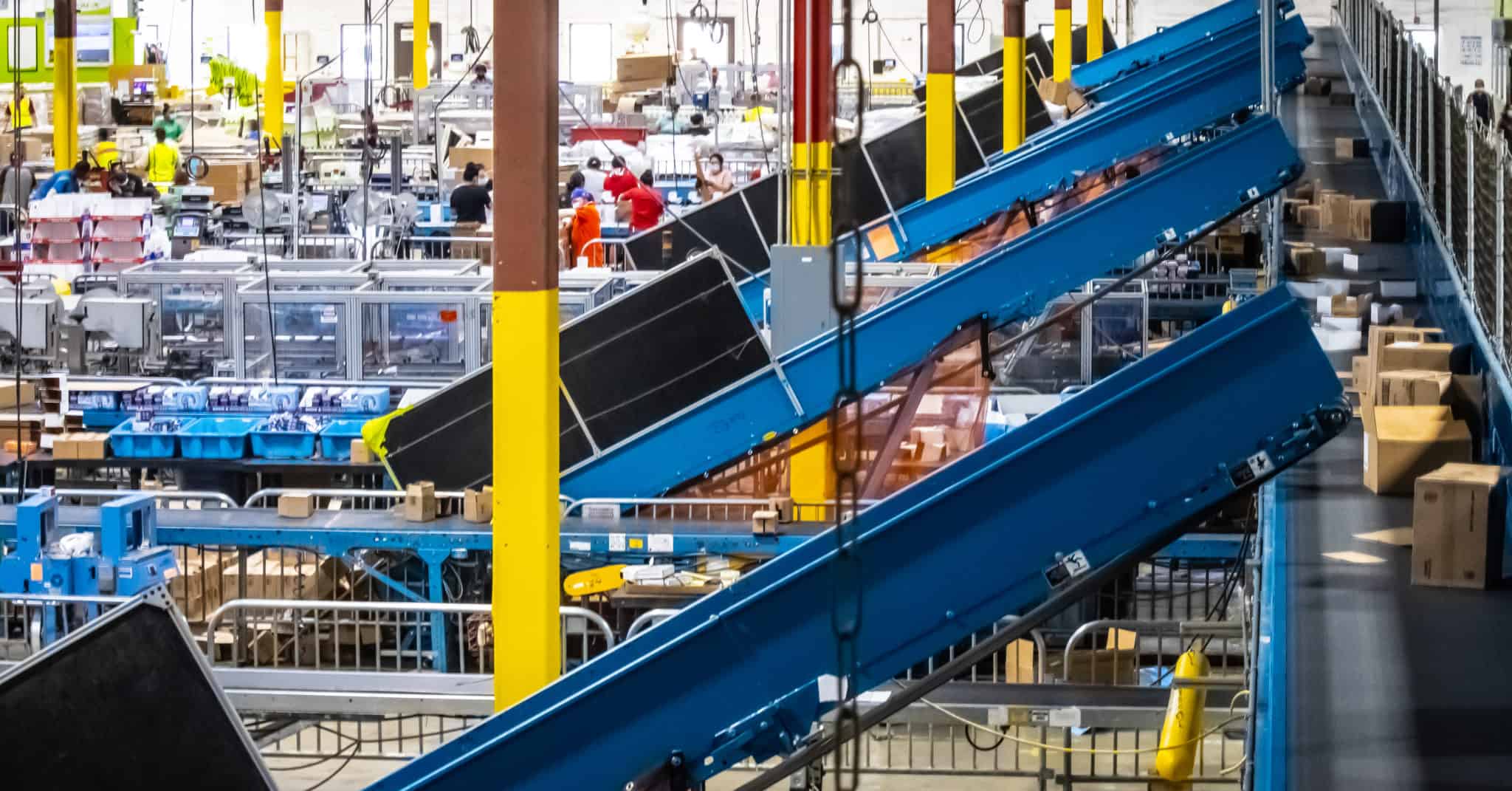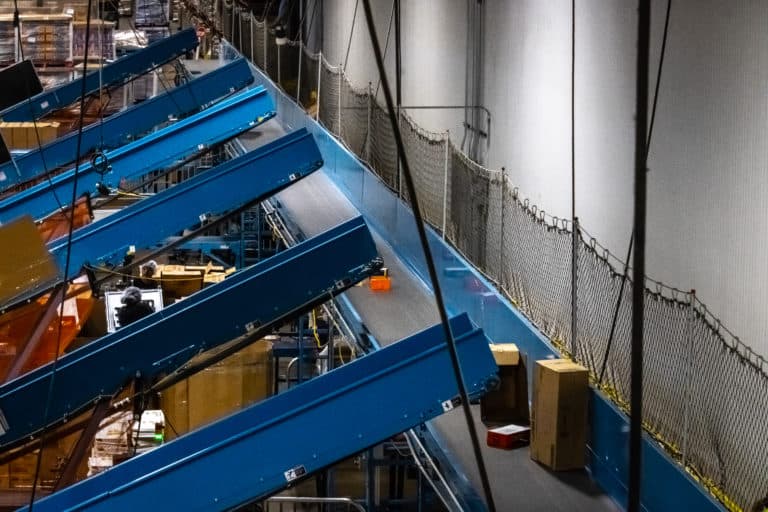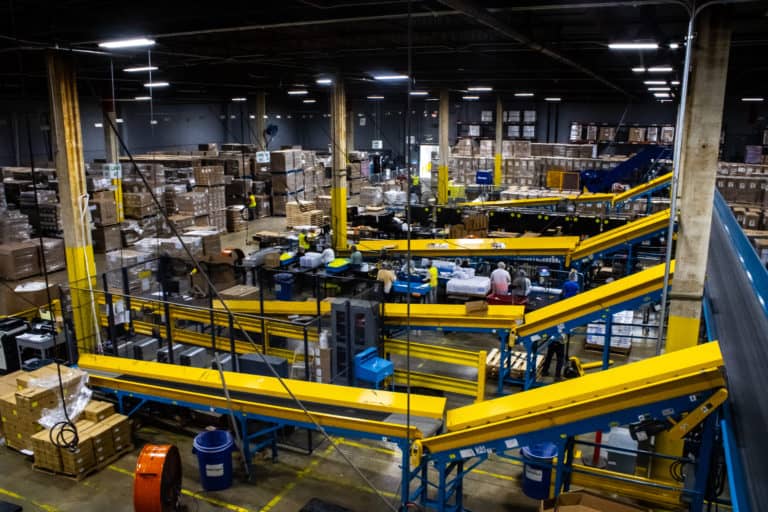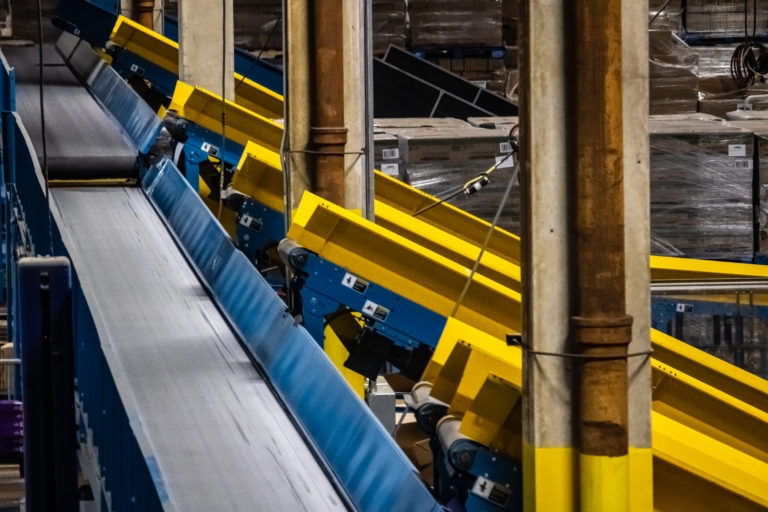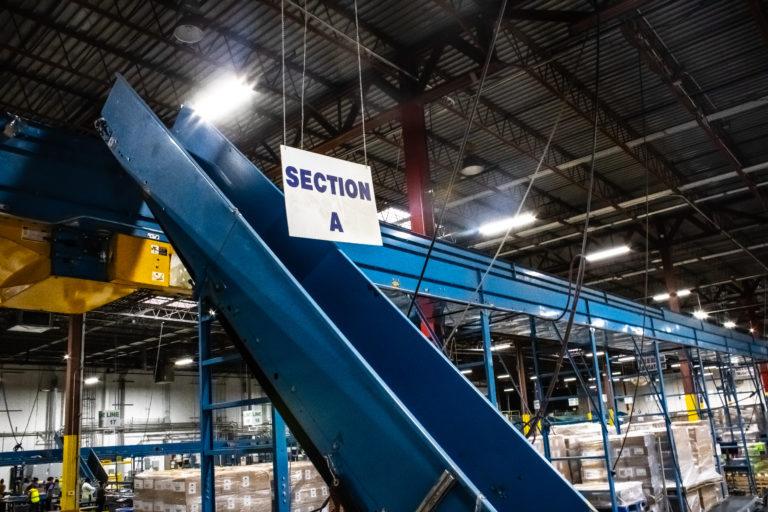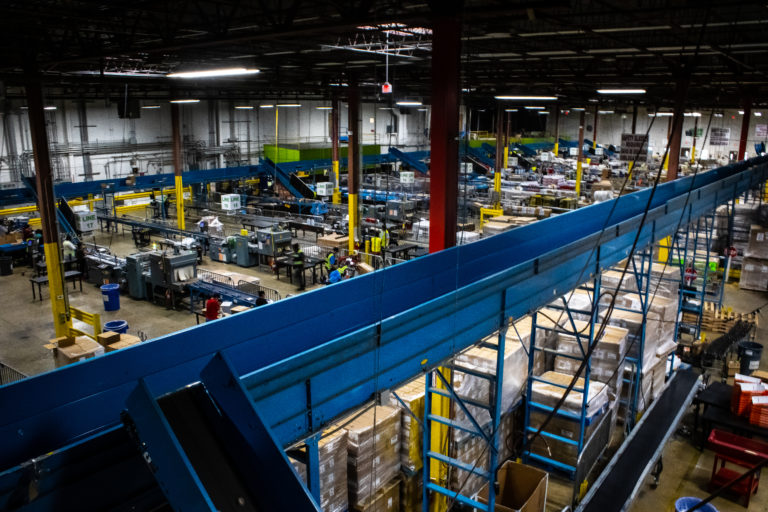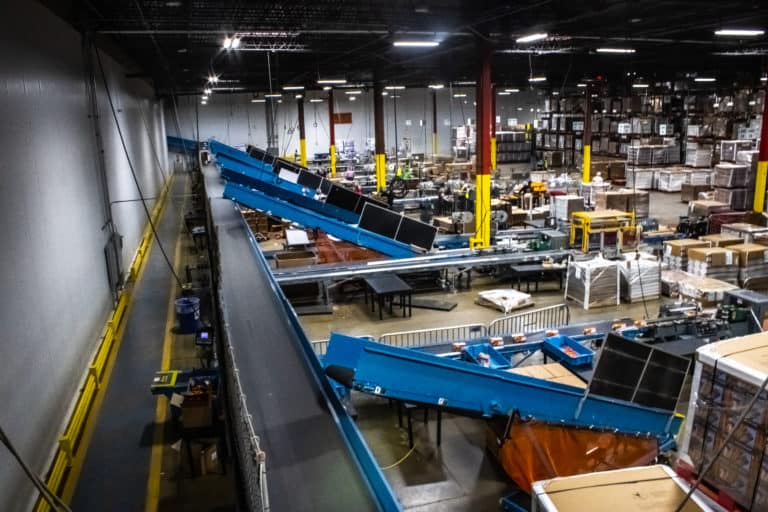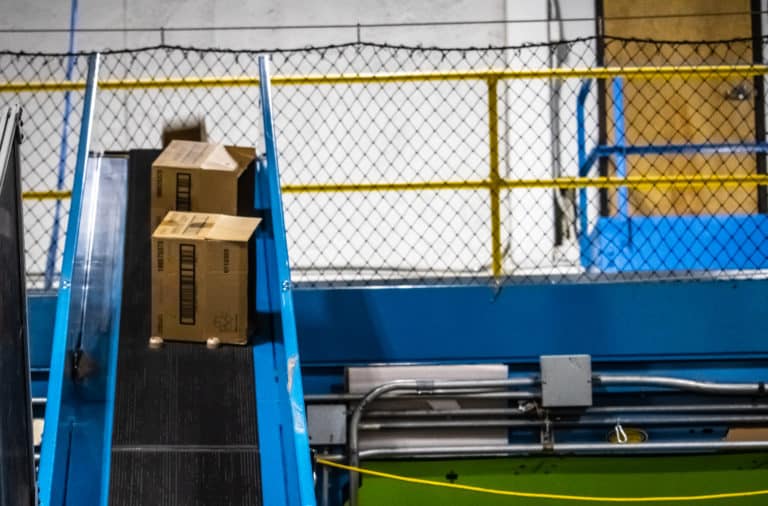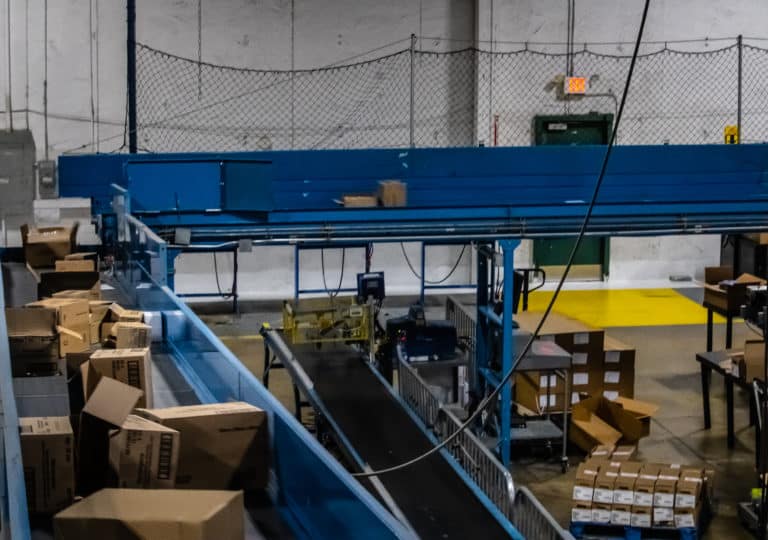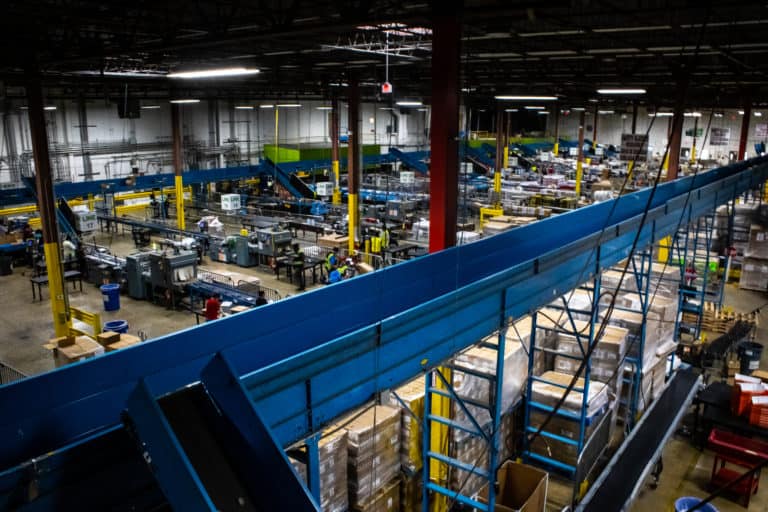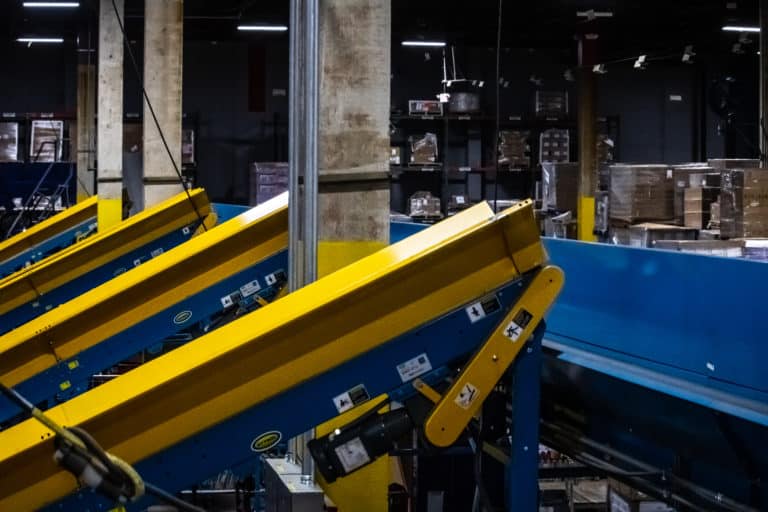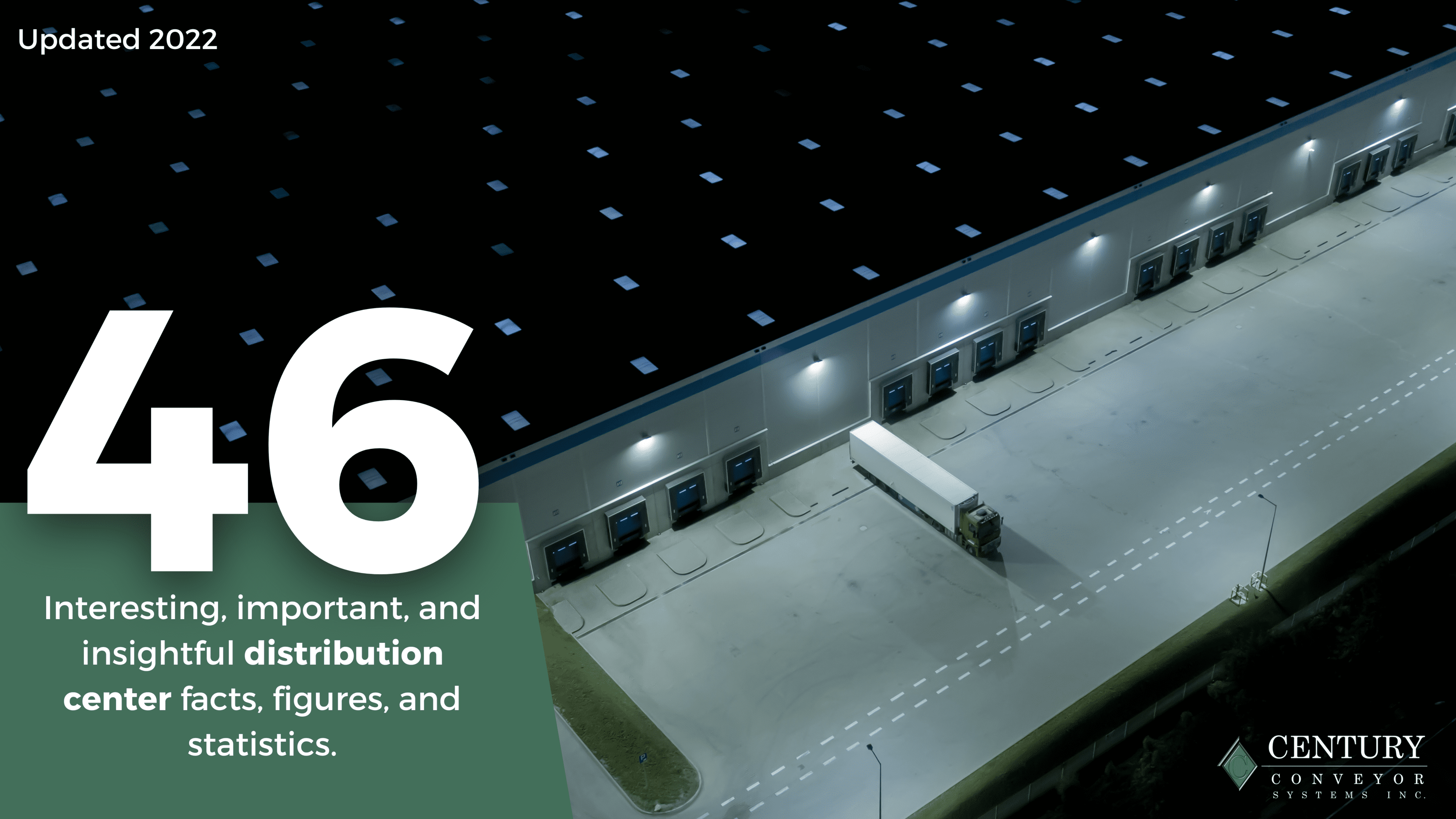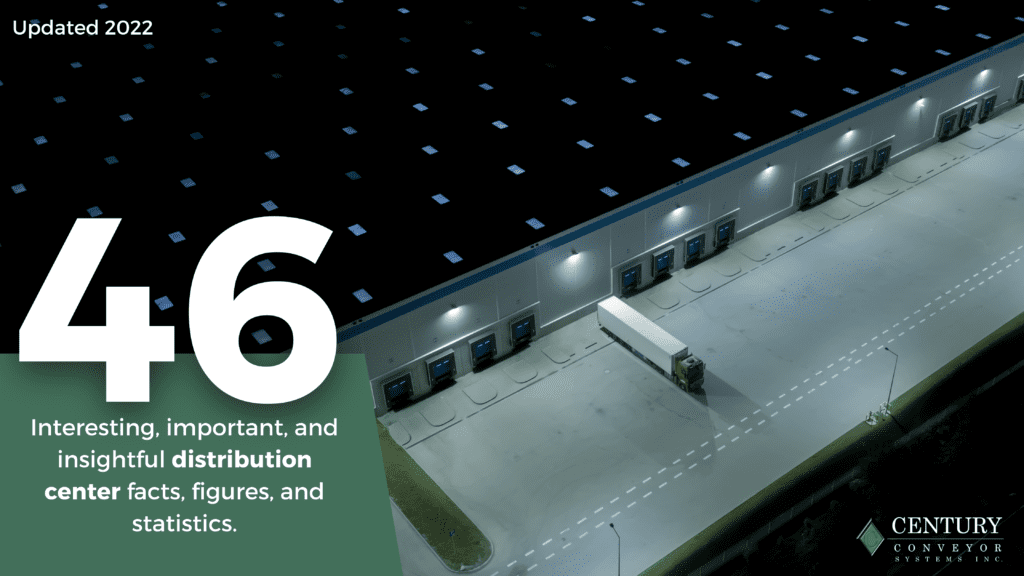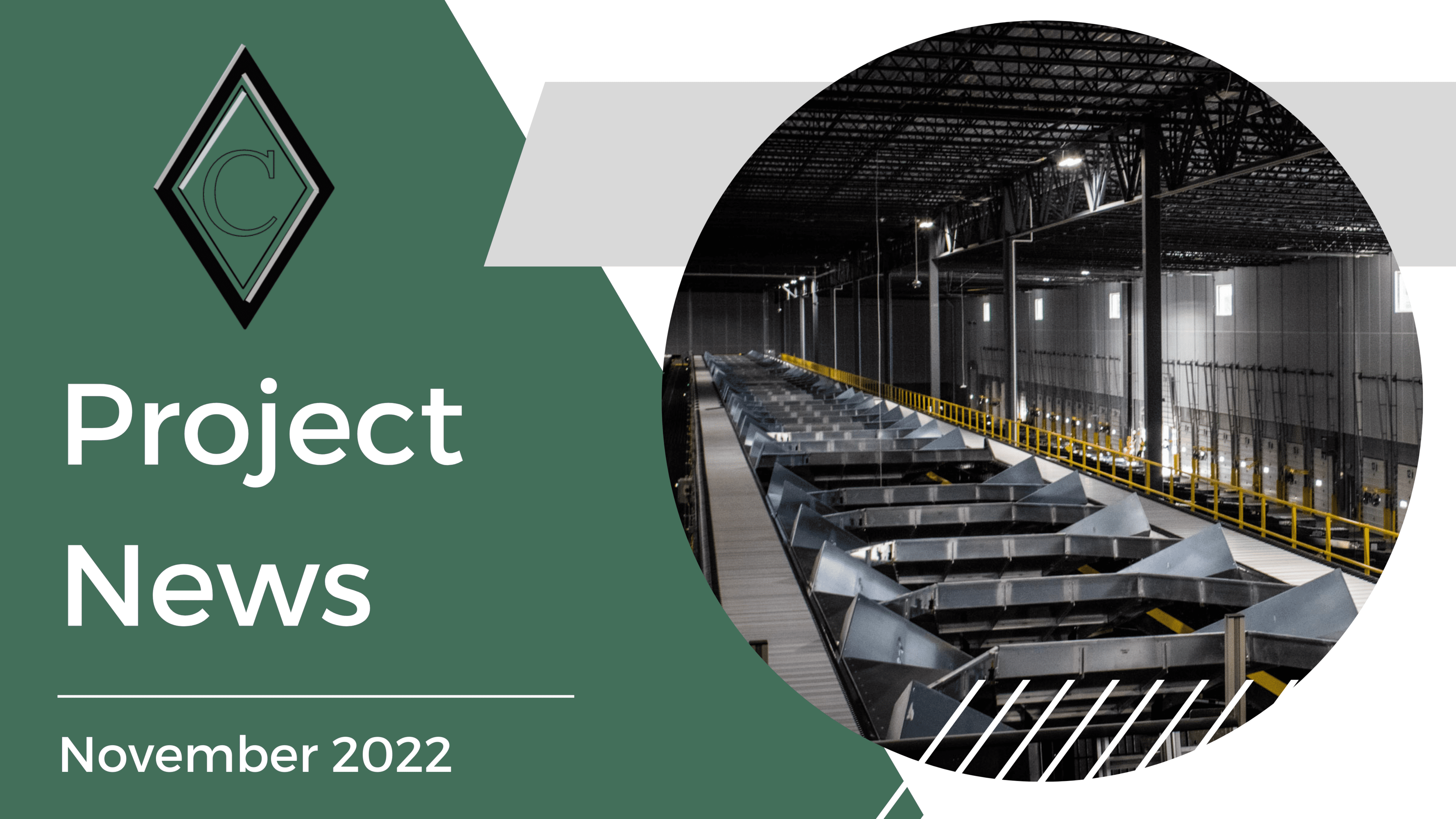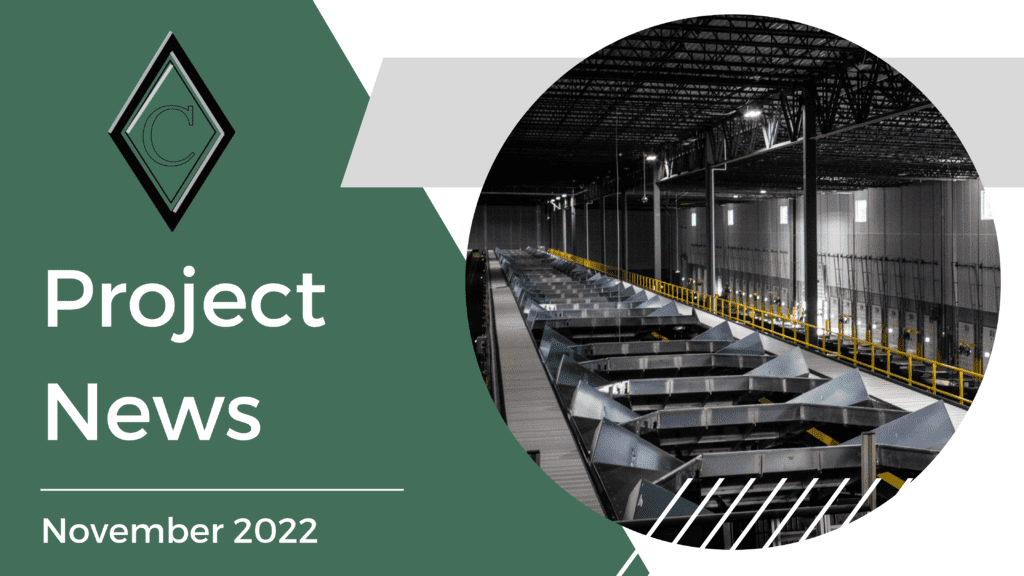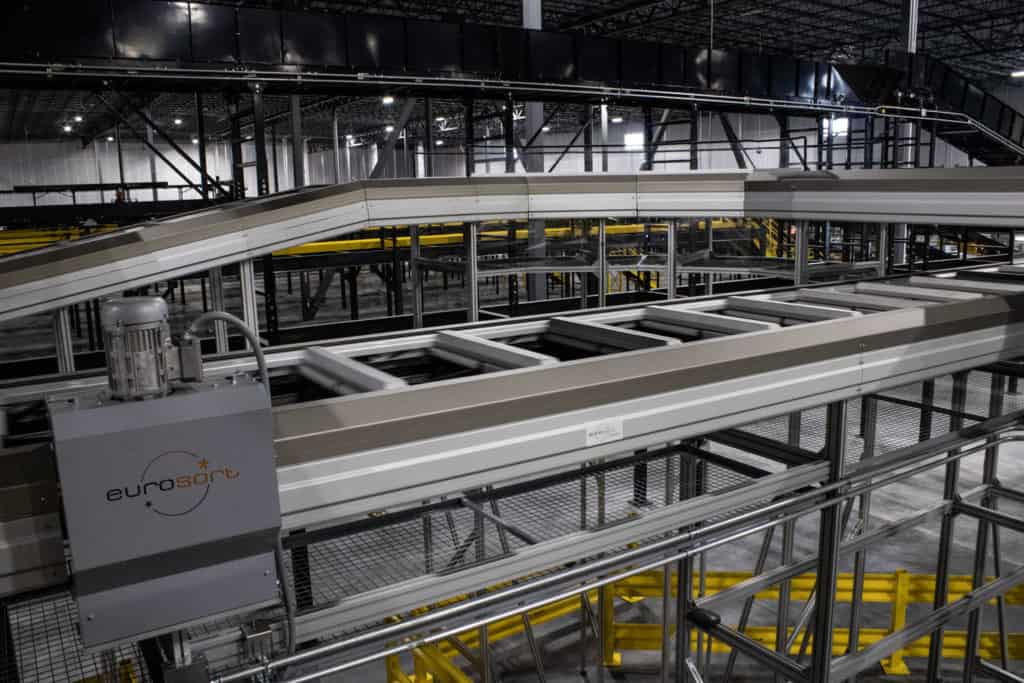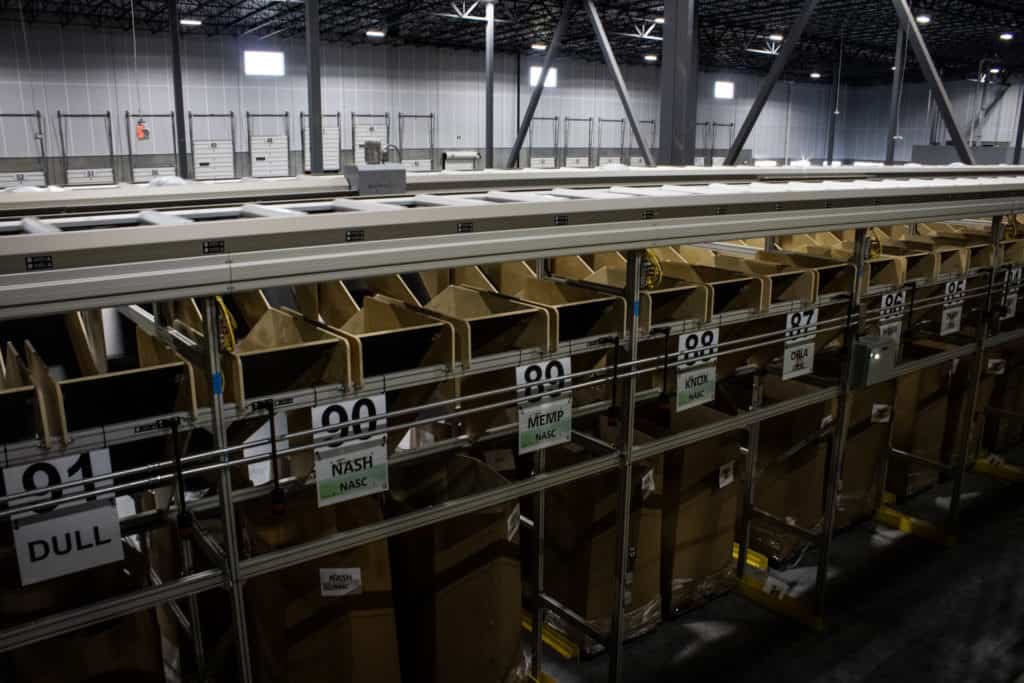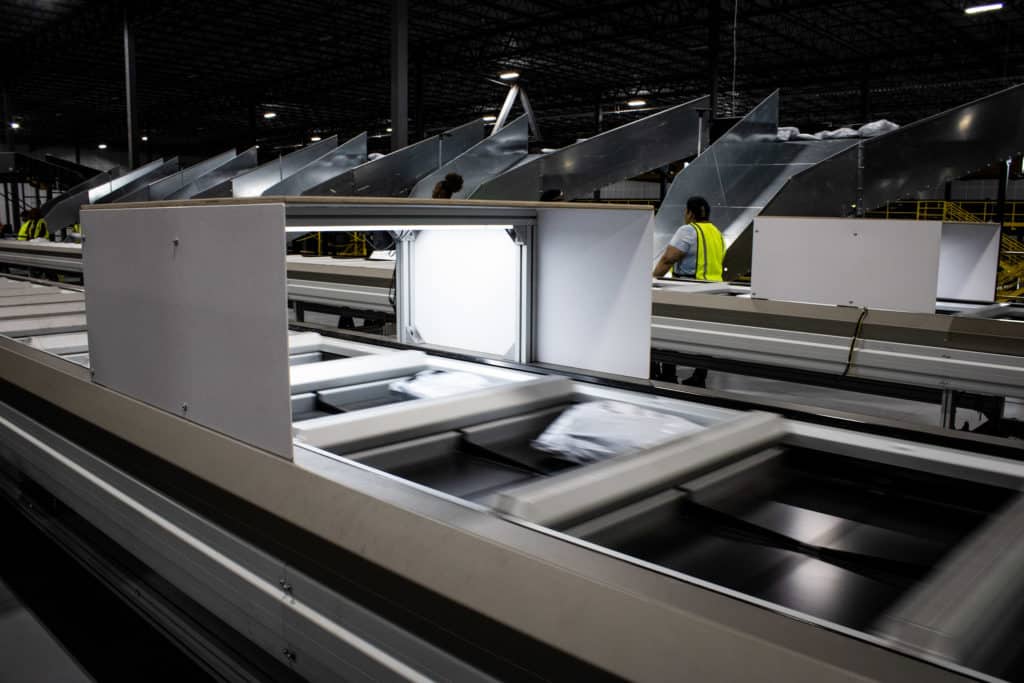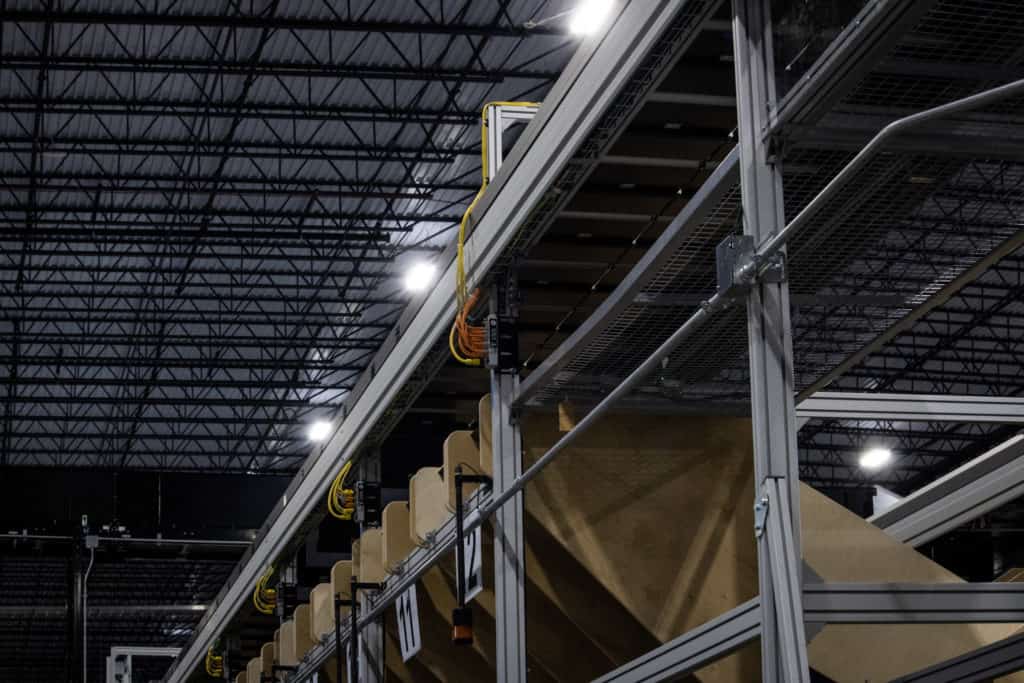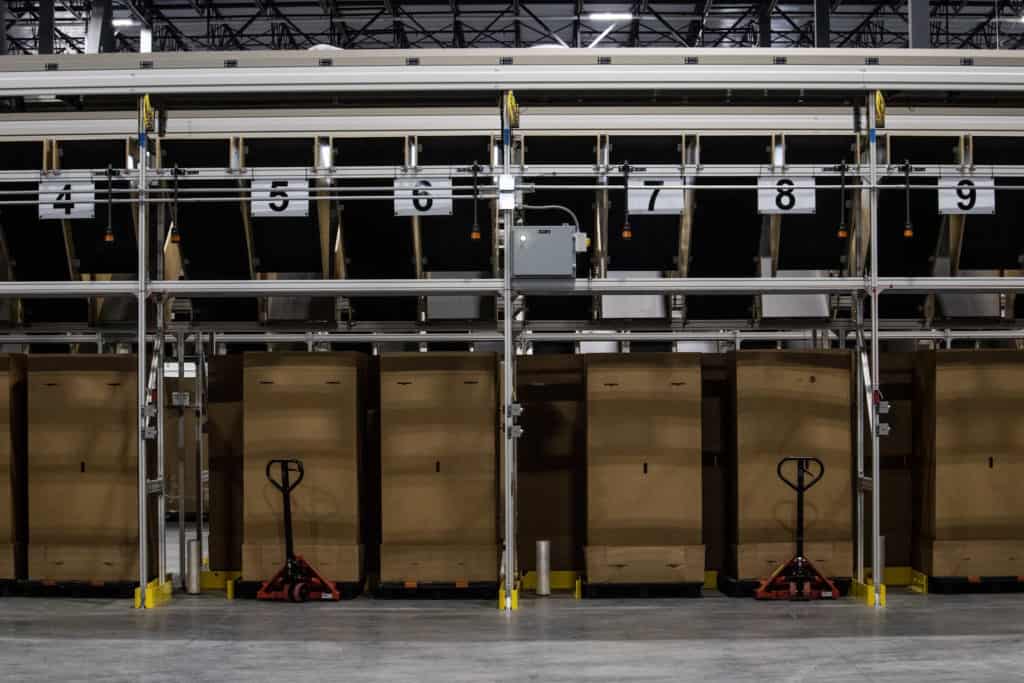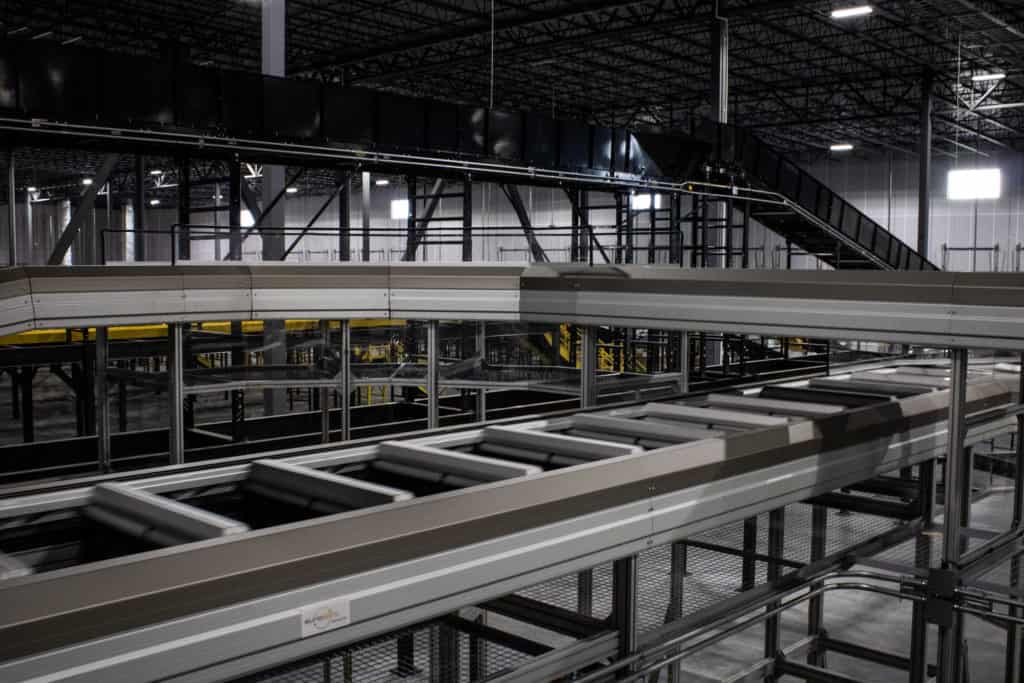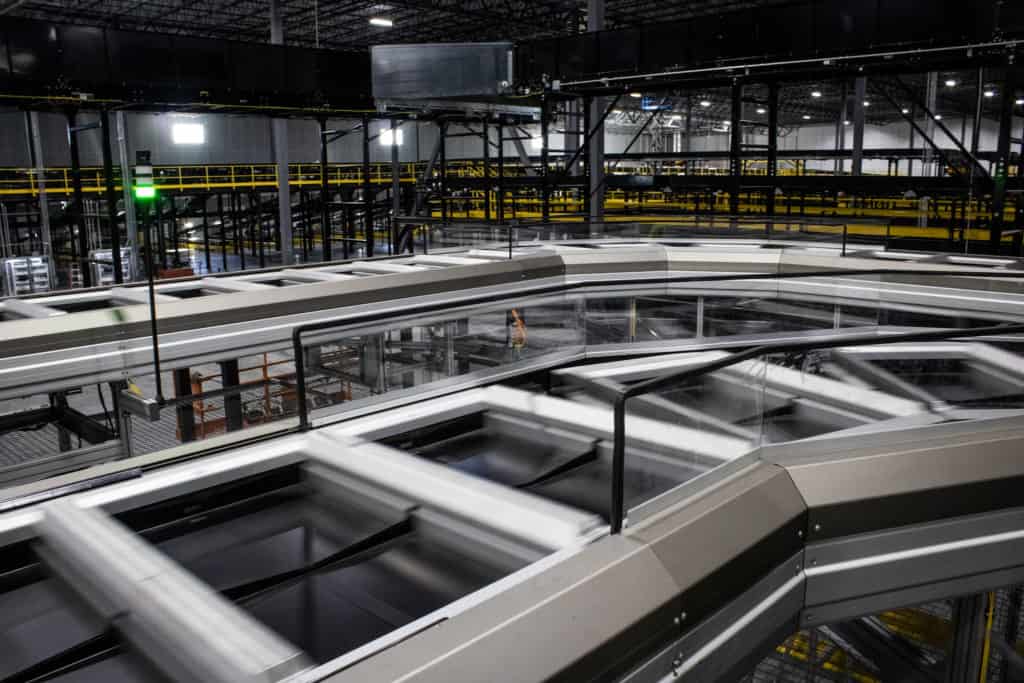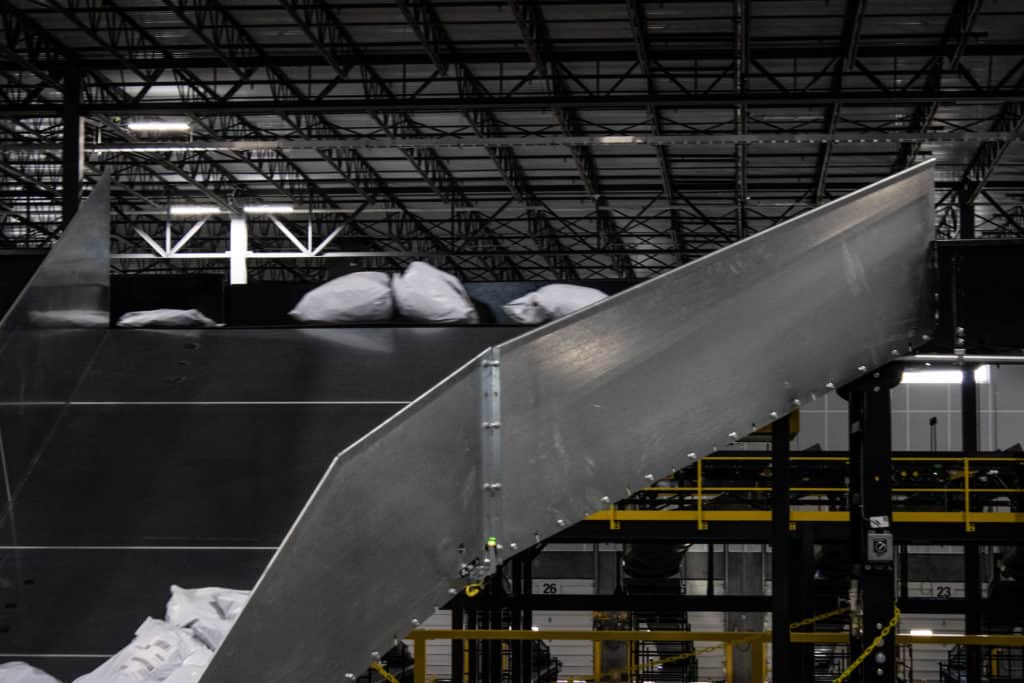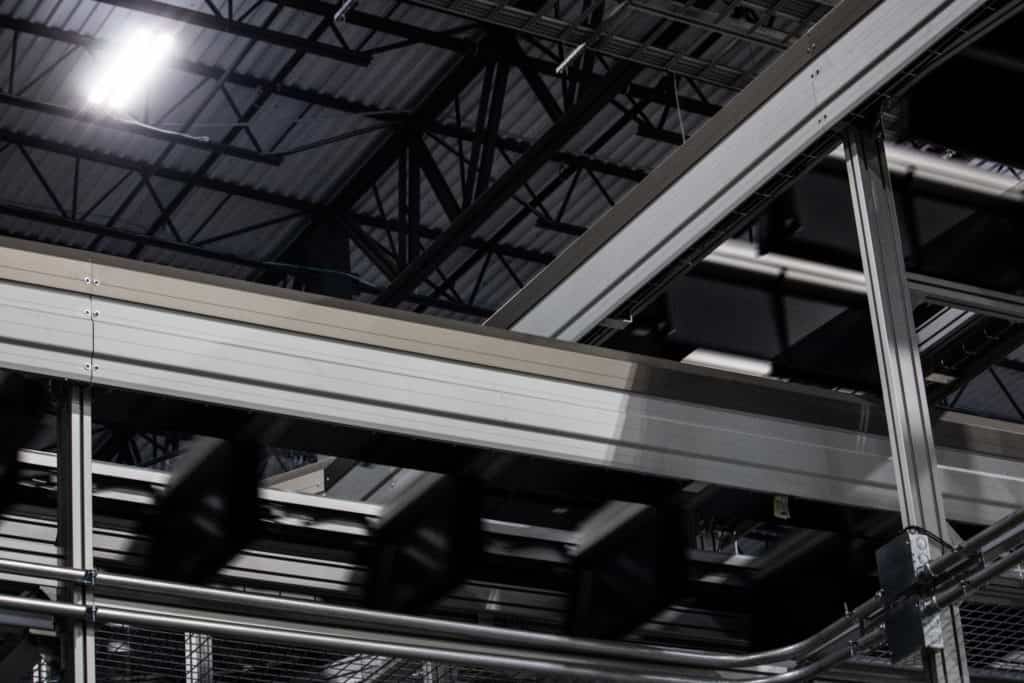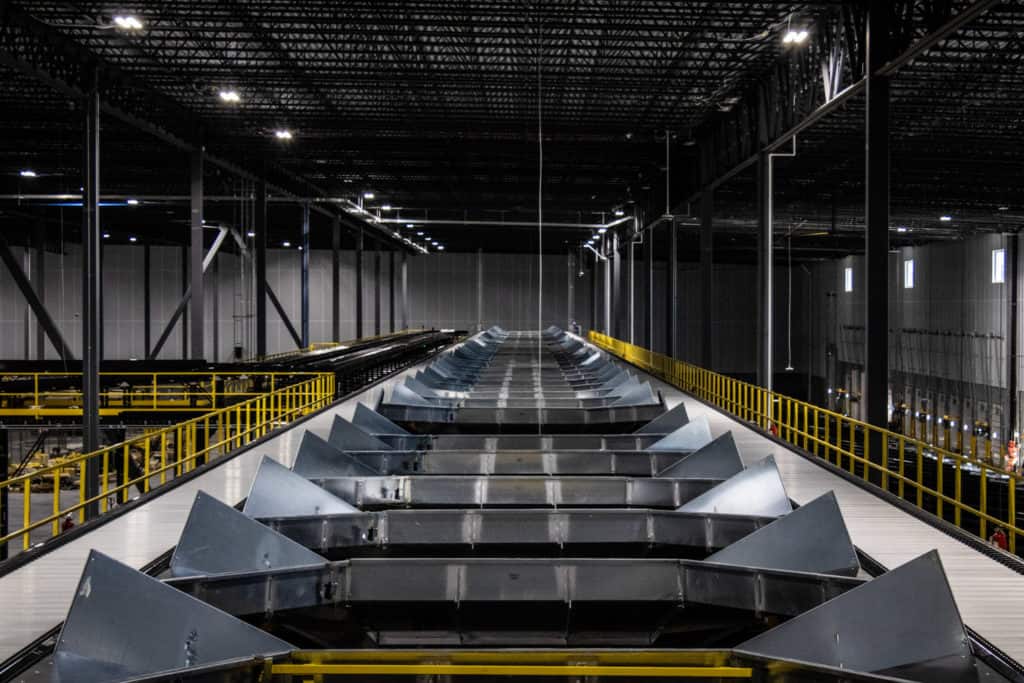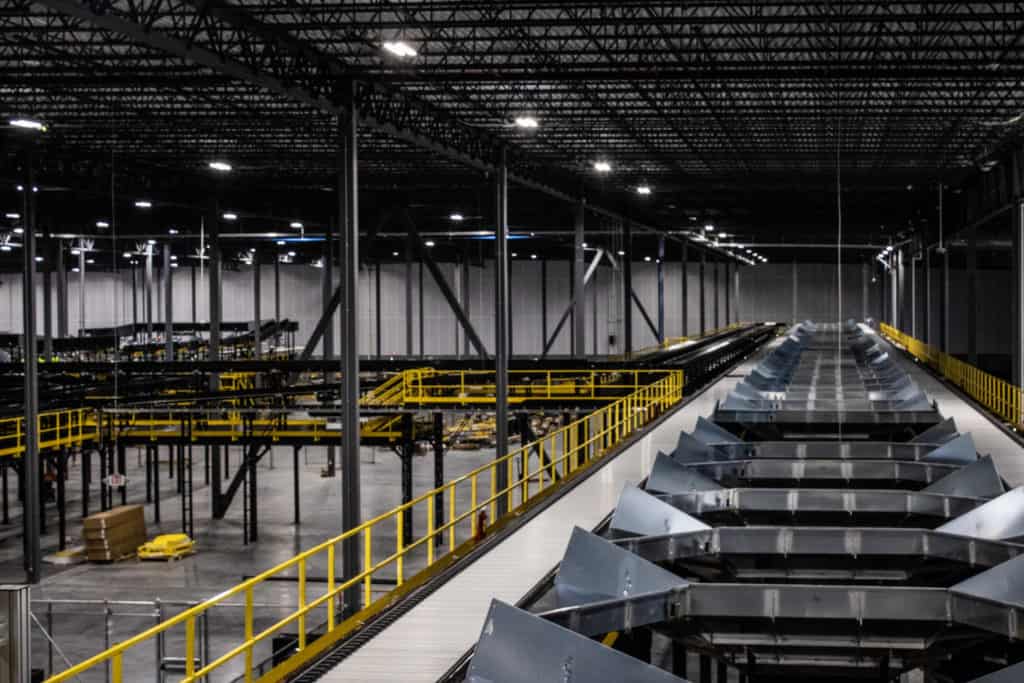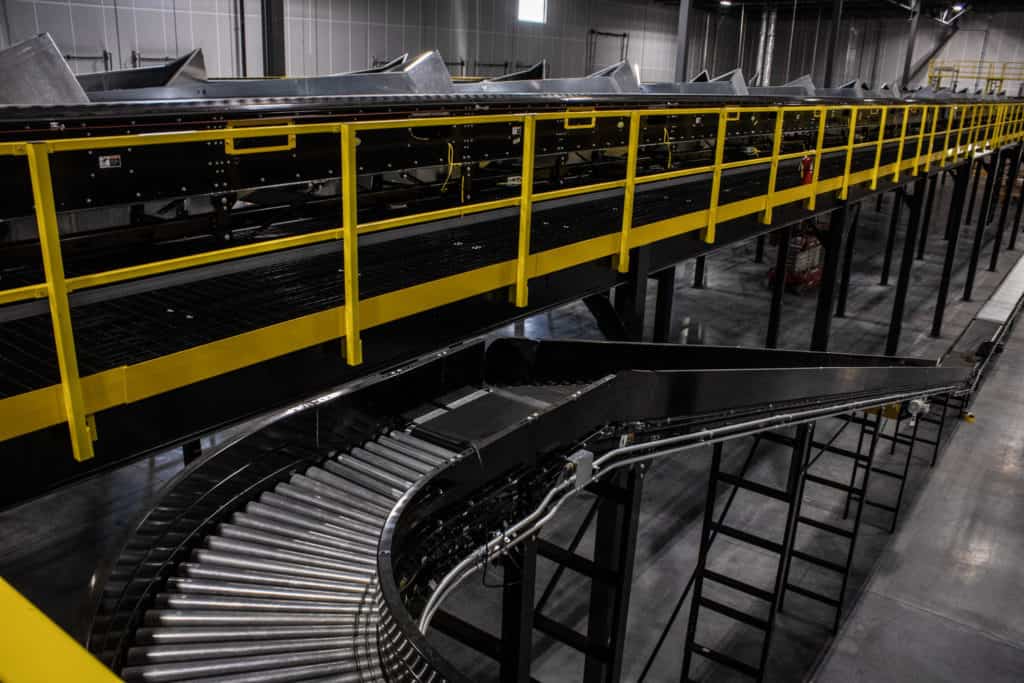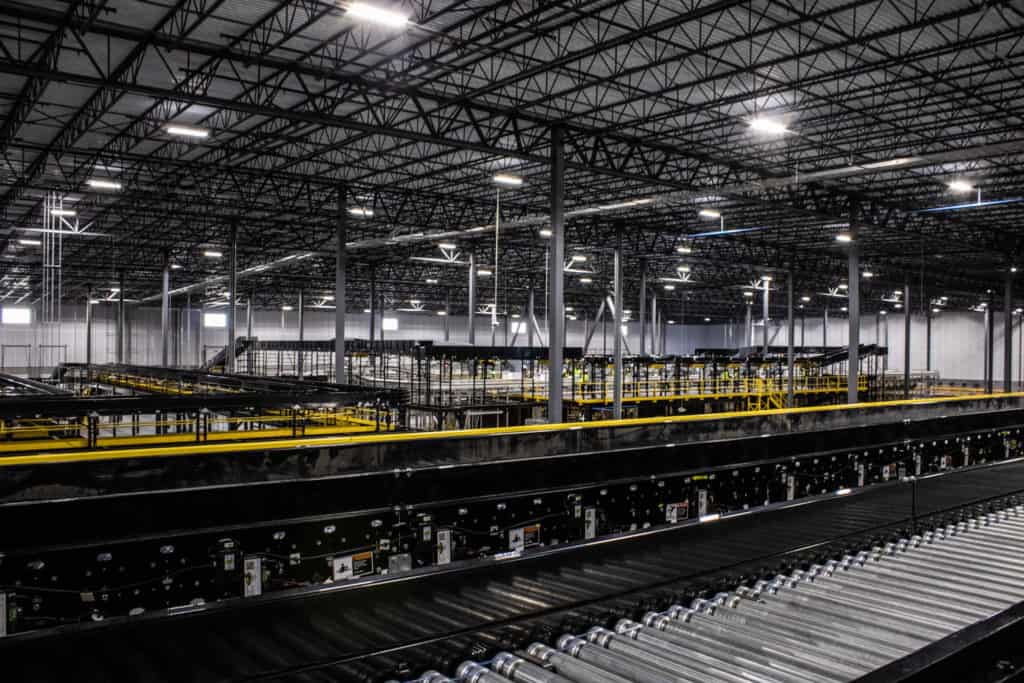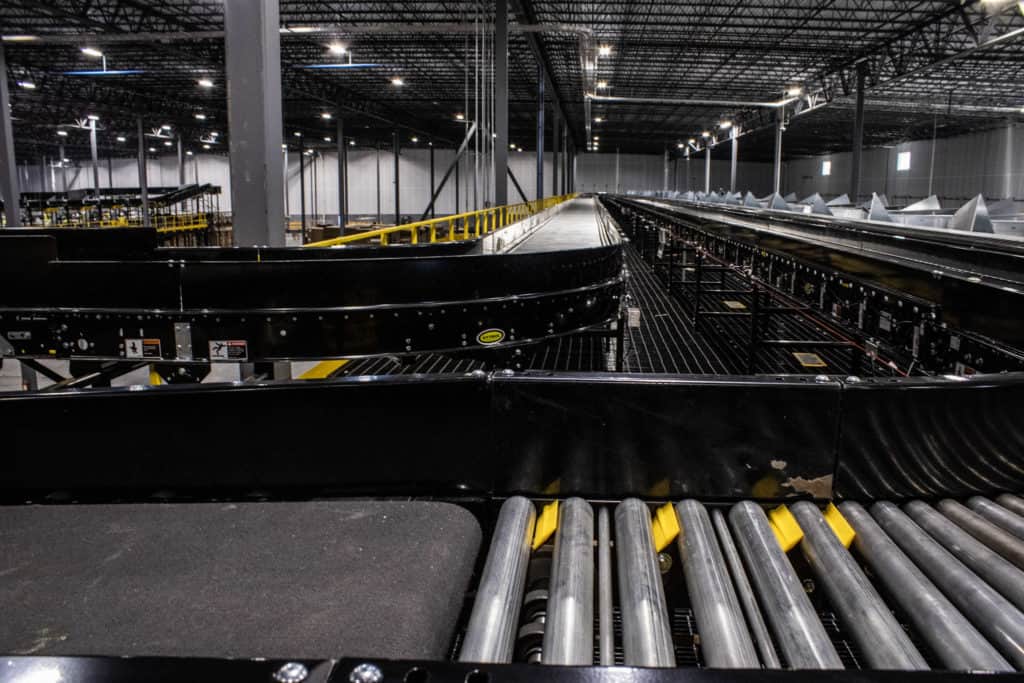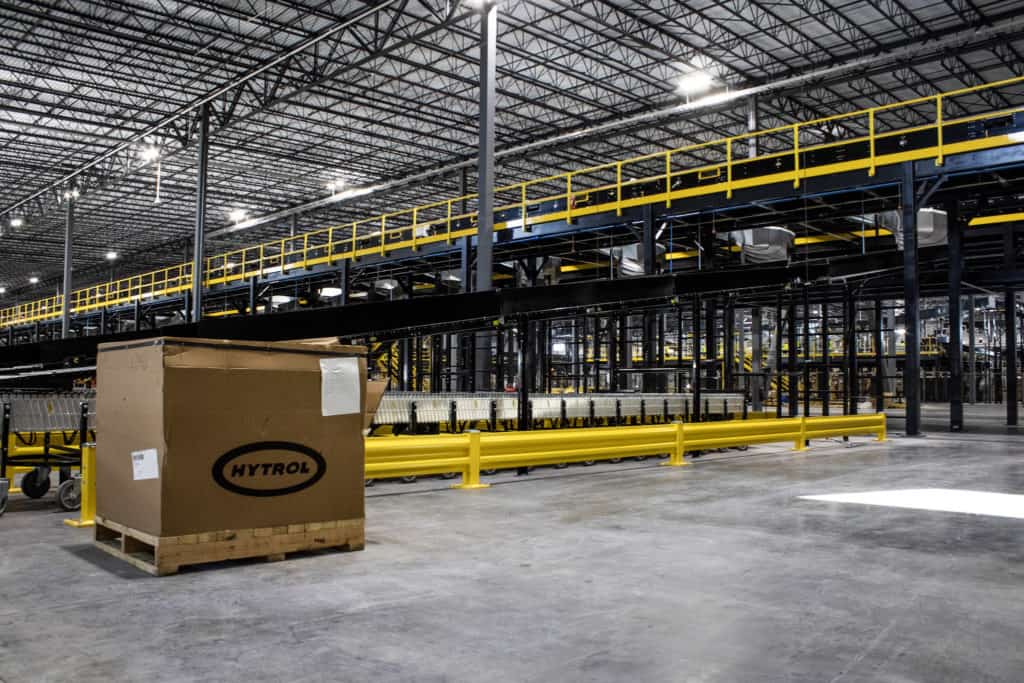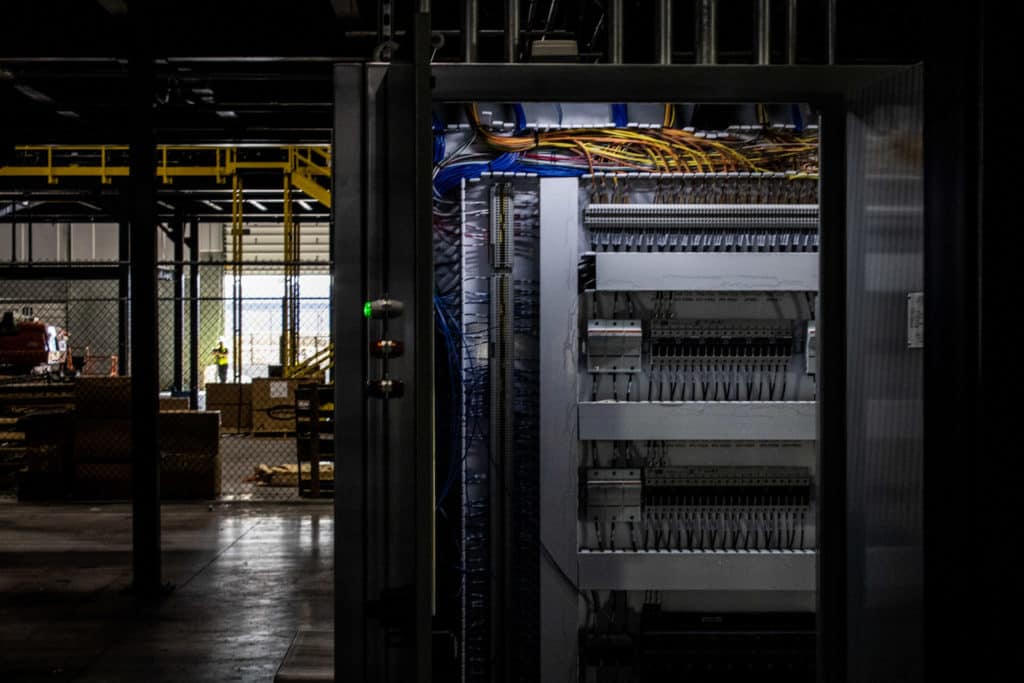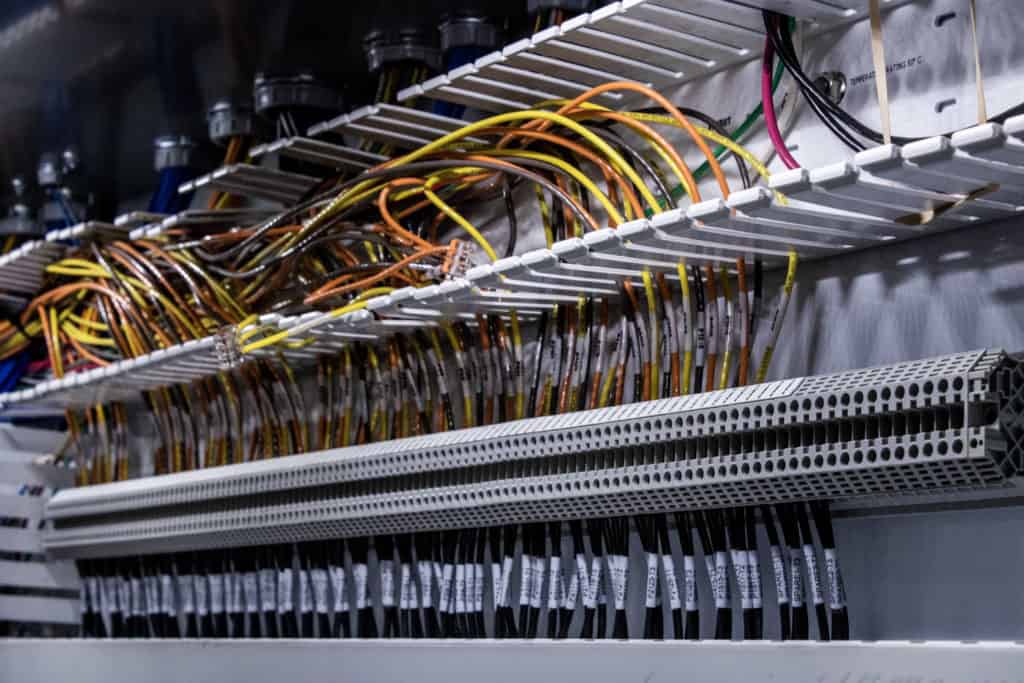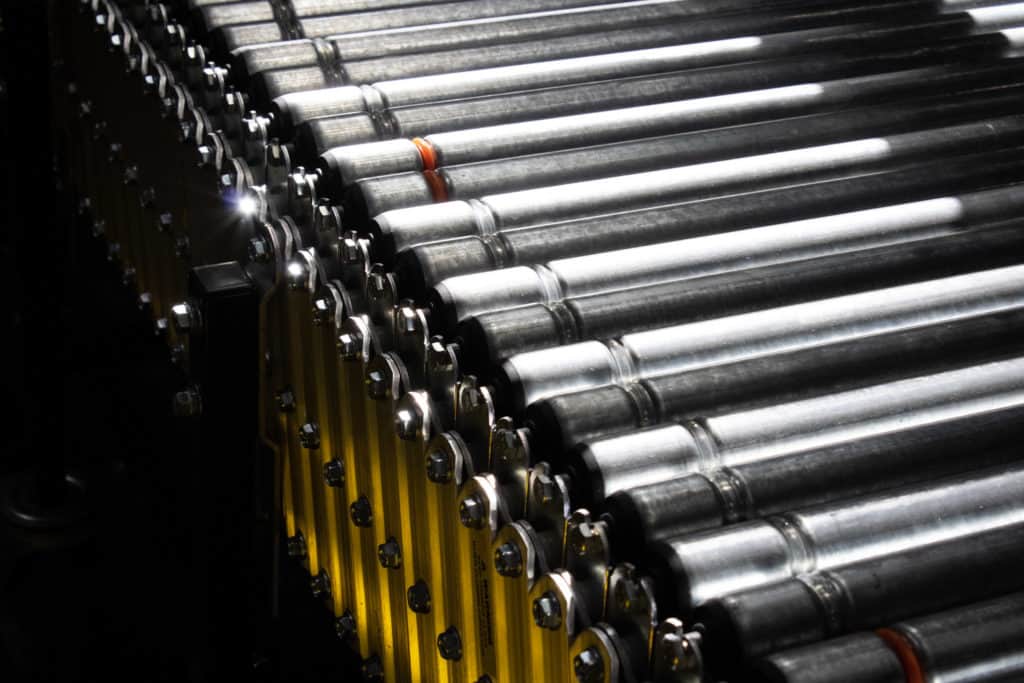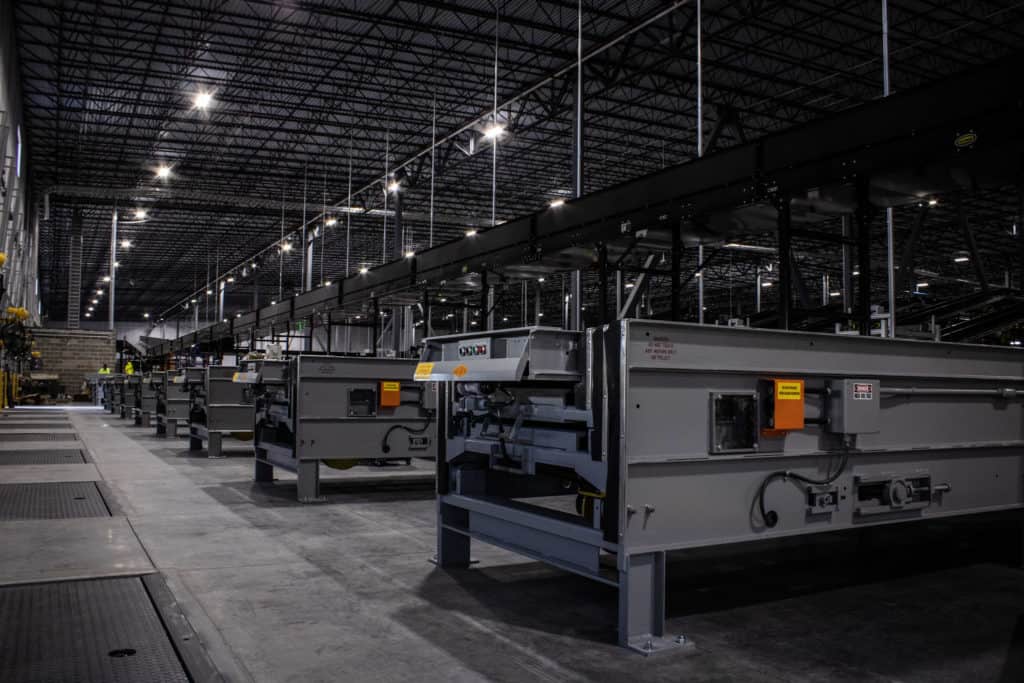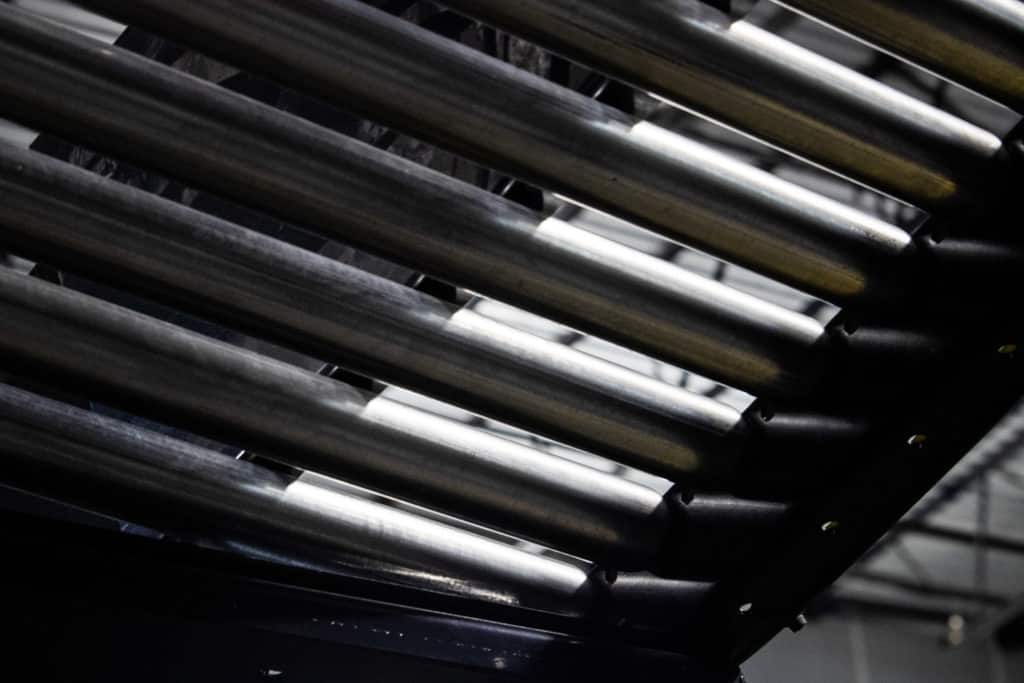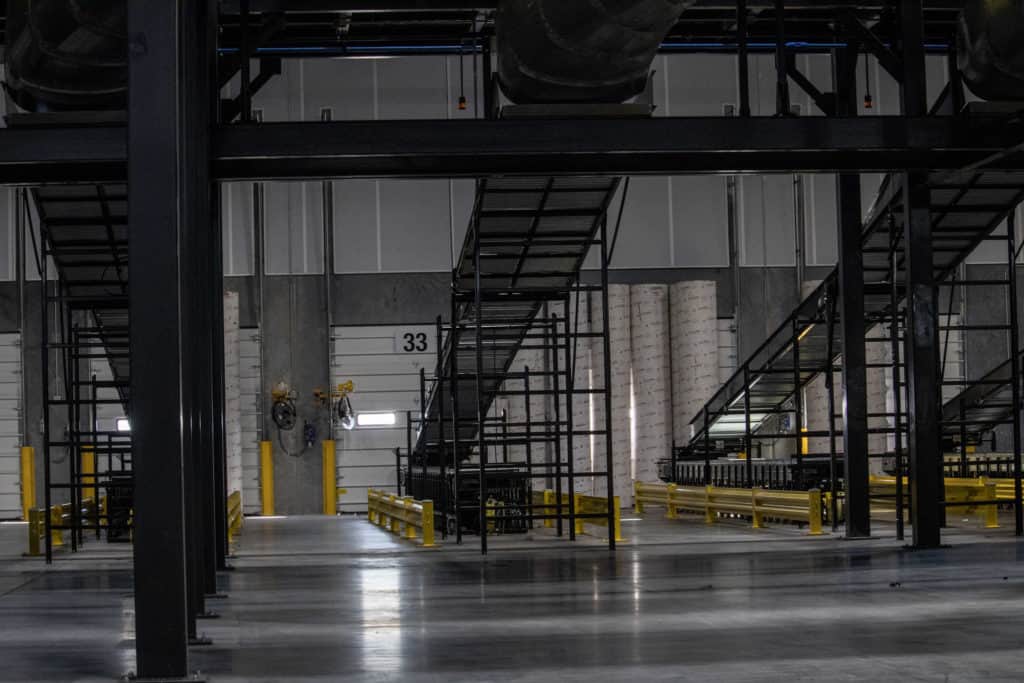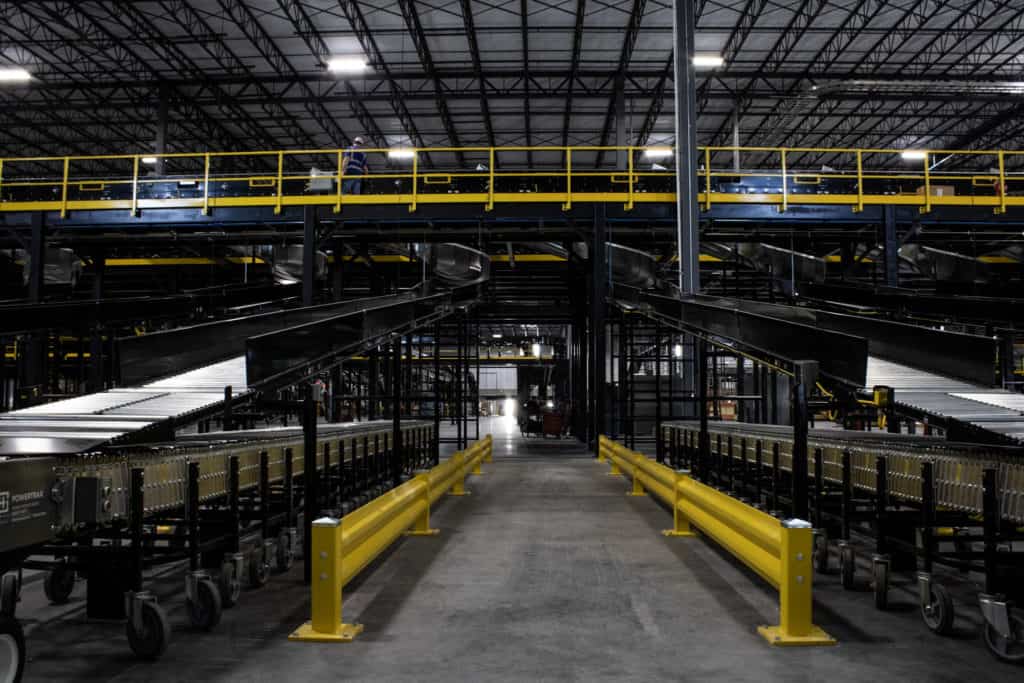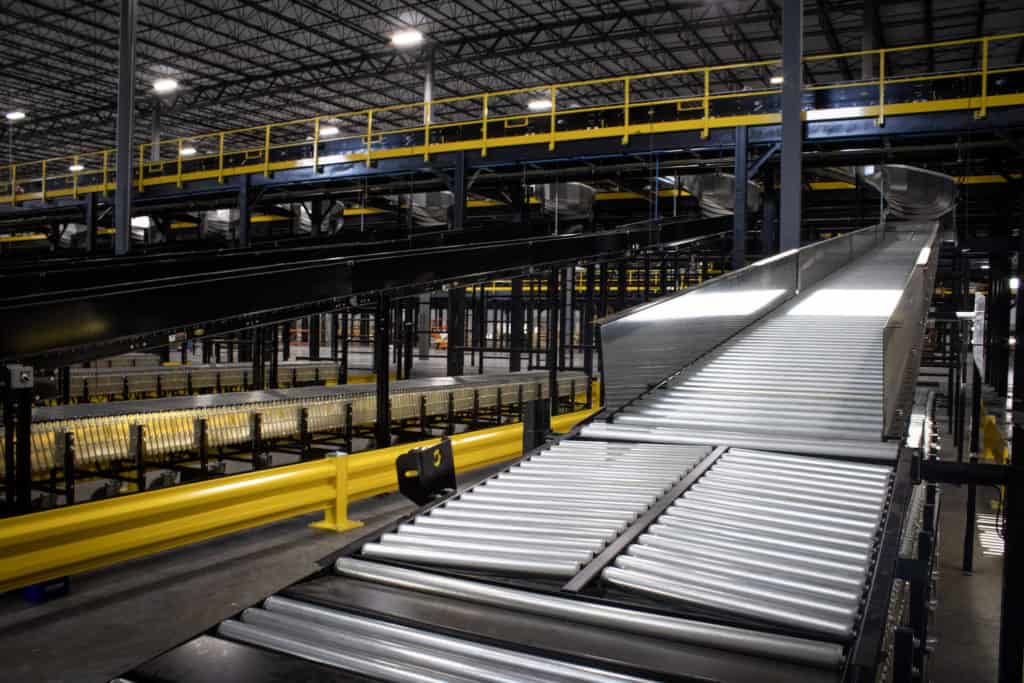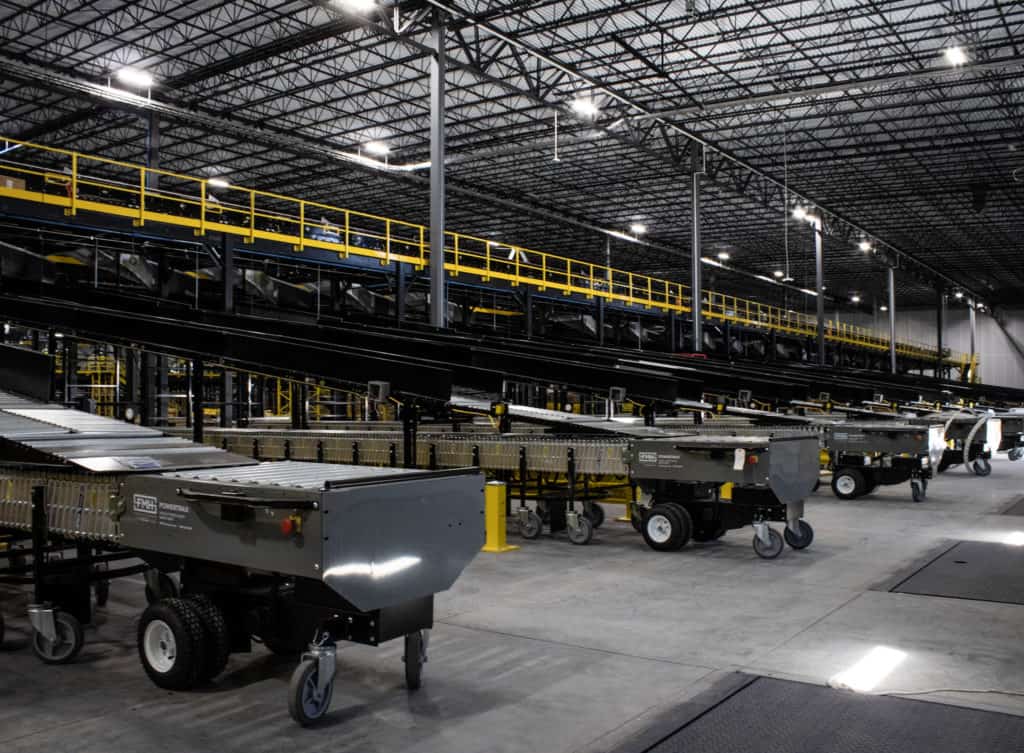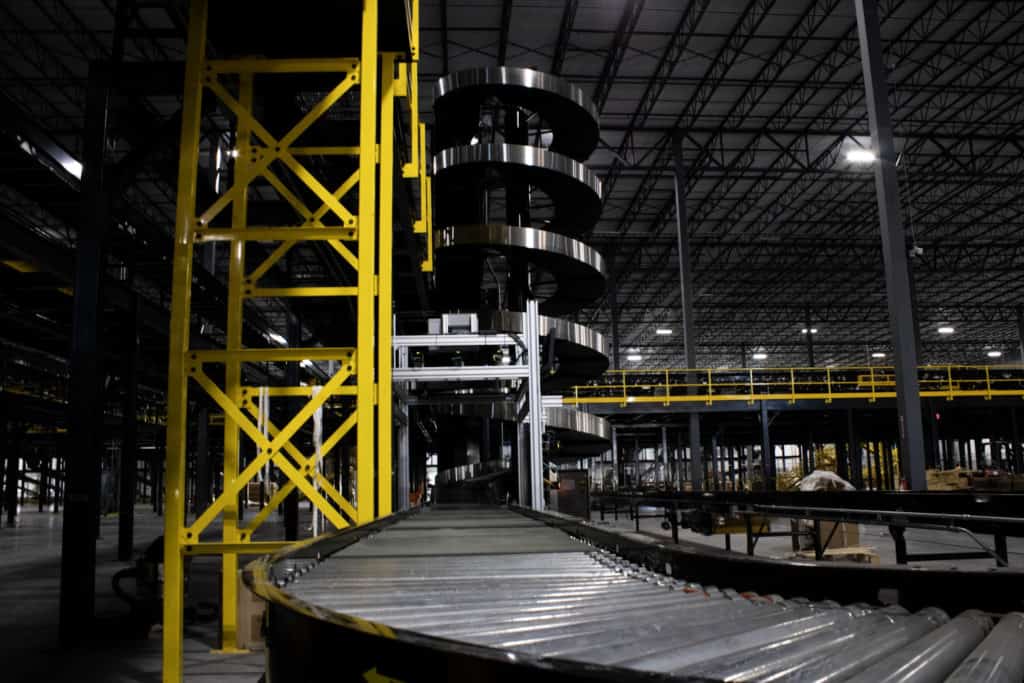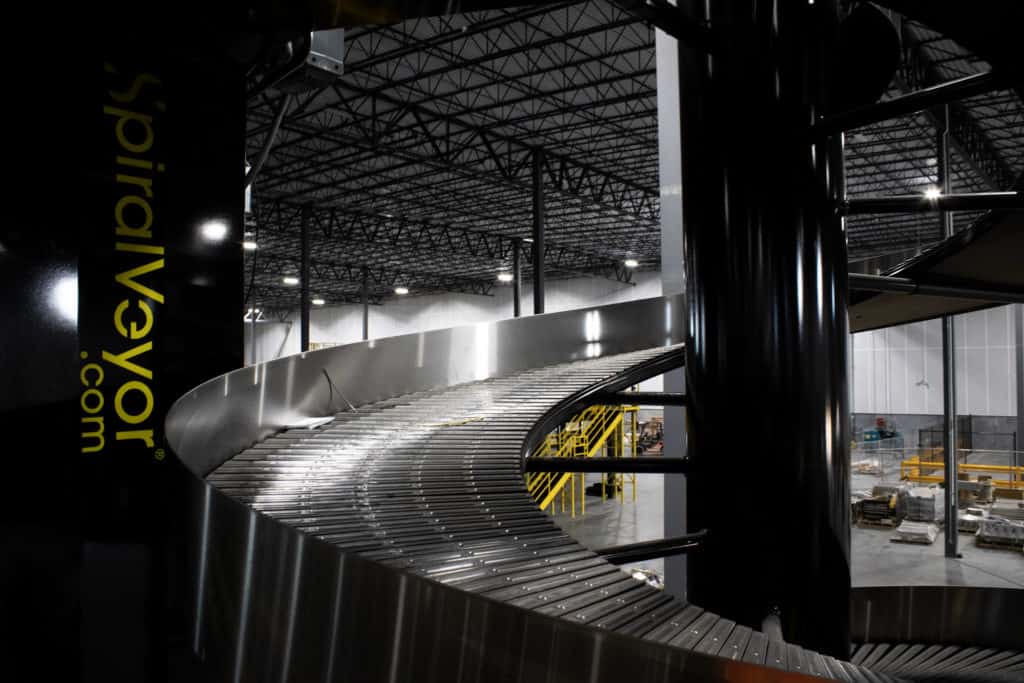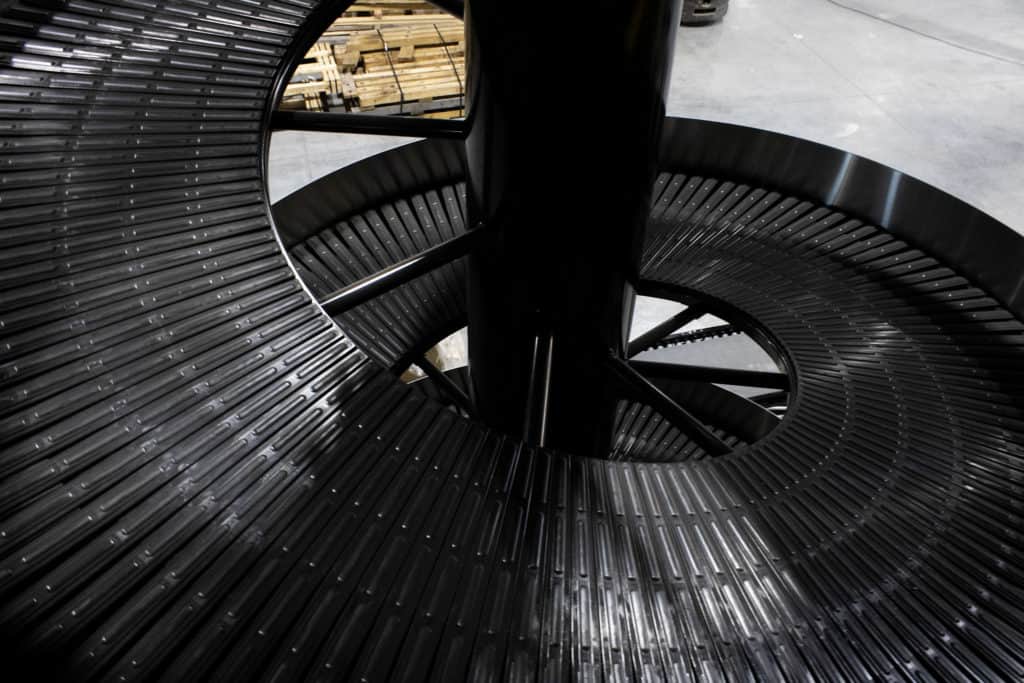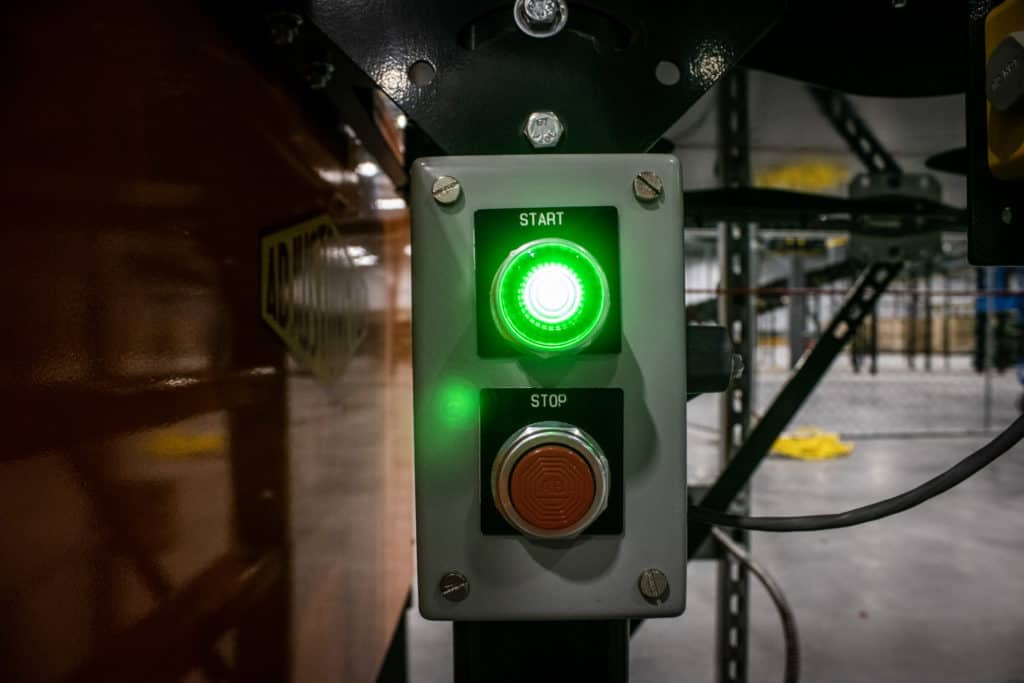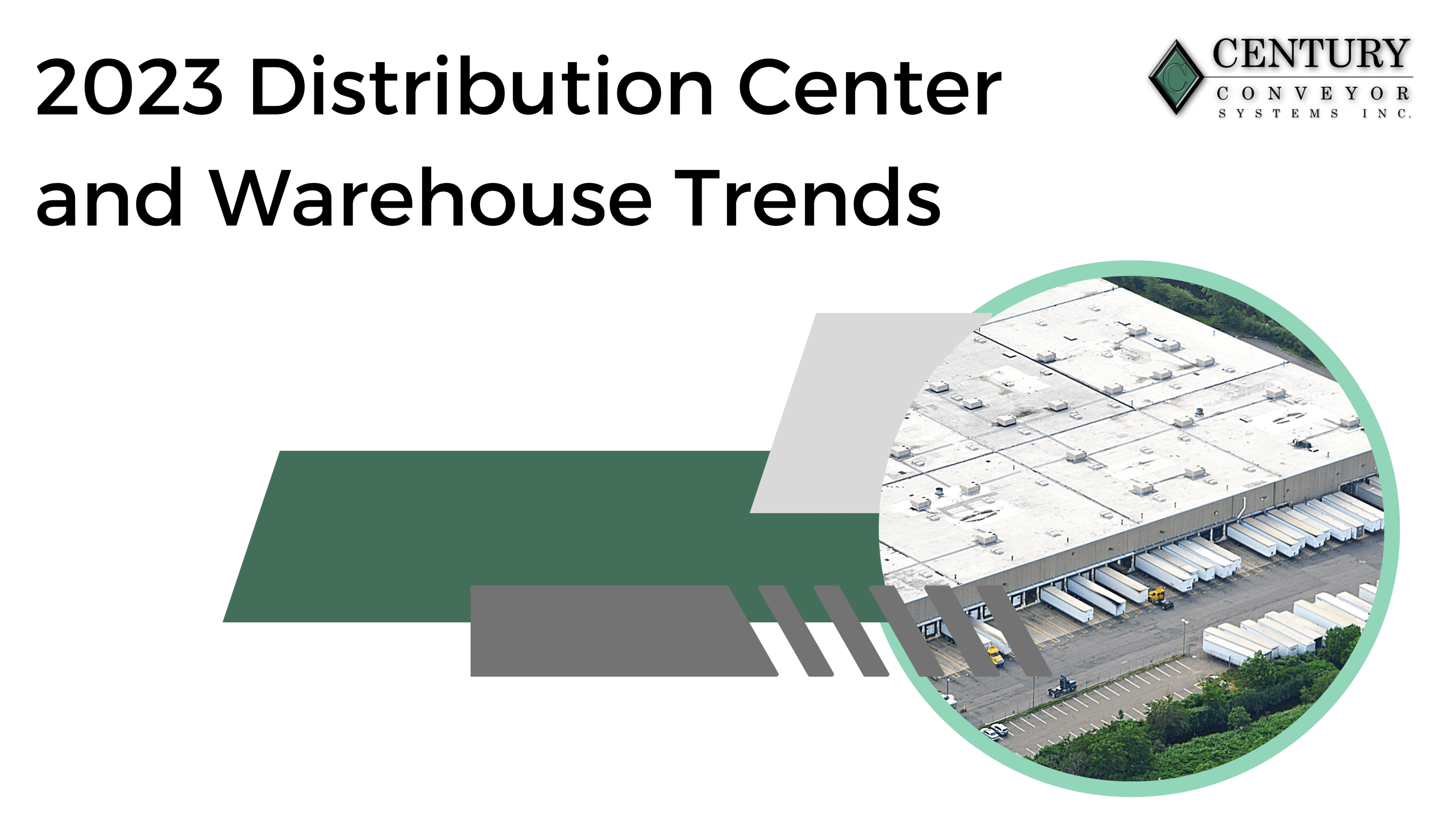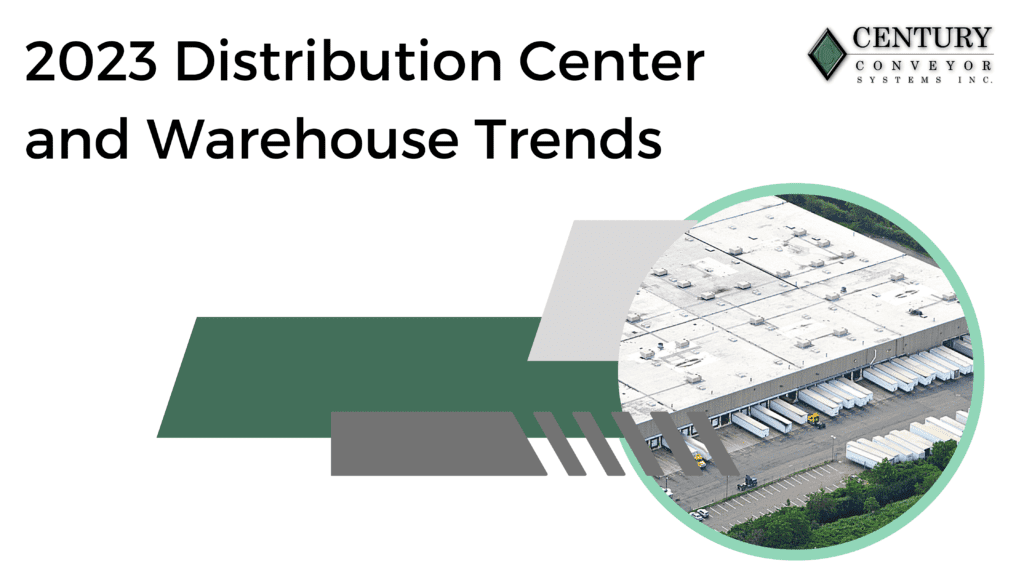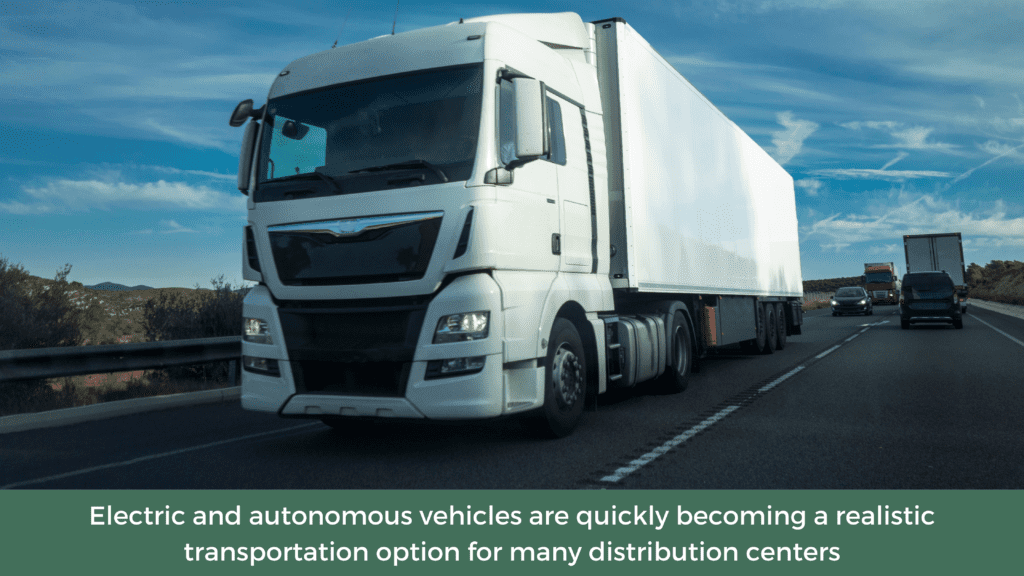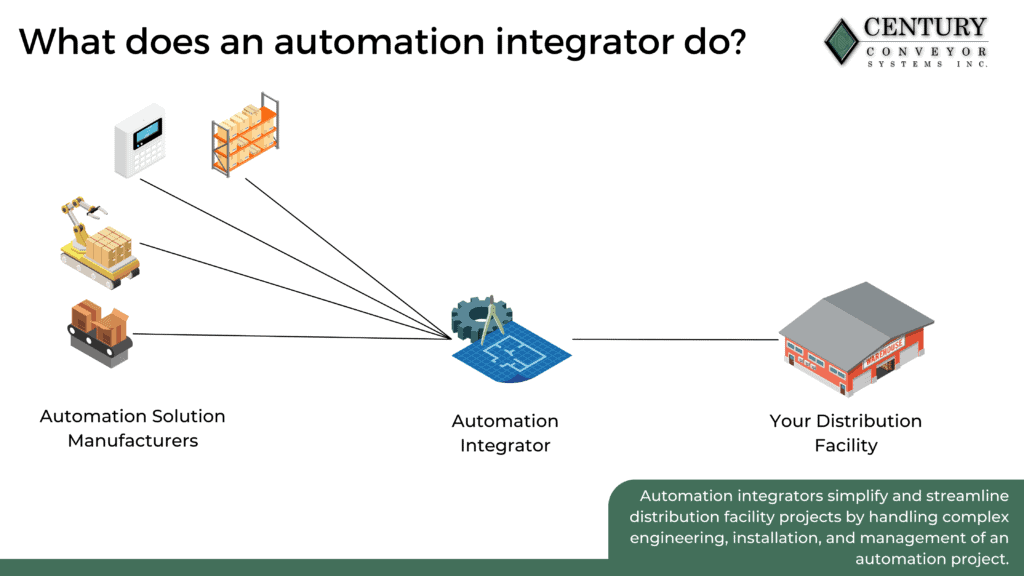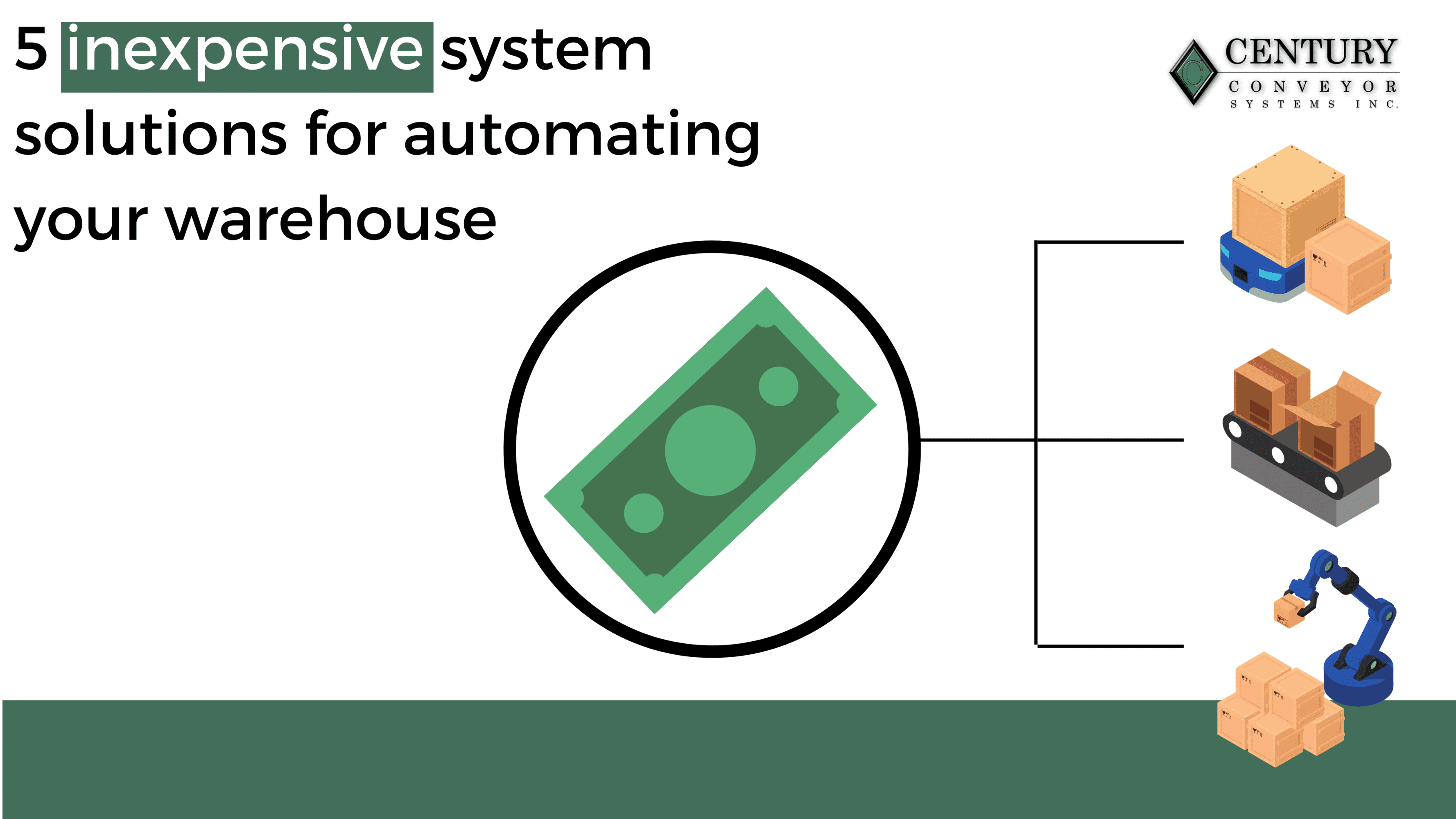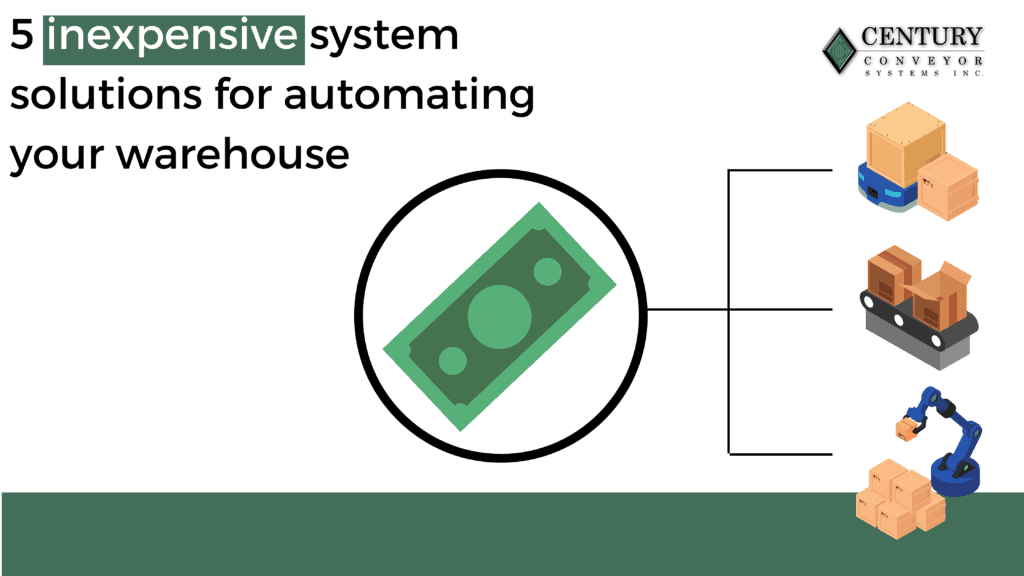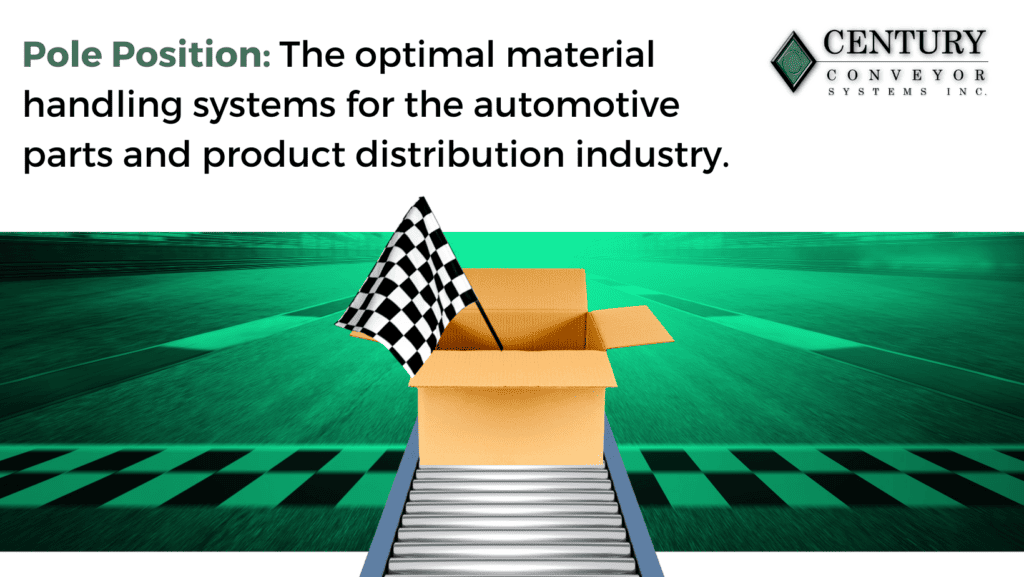
Auto-mate
In the dynamic world of the automotive product and Original Equipment Manufacturer (OEM) parts distribution industry, efficiency and precision are critical to success. Conveyors and material handling systems have revolutionized these sectors by optimizing processes, reducing operational costs, and ensuring seamless supply chain management.
By far, the most important factor Century has encountered pertaining to automating an auto parts and products distribution center is the ability to handle product of extensively variable sizes. It should come as no surprise that auto part & product distributors are rated by their ability to provide the exact correct part for the respective manufacturer, model, year, trim, and engine specifications. To add an extra layer of complexity most distributors stock multiple brands of the same product along with tiered pricing options to reflect economy components versus performance items.
This all accumulates into a distribution operation that requires thousands and thousands of extremely specific products ready to be picked at any moment with the highest level of accuracy. If that isn’t enough, customers (both businesses and consumers) expect quick shipping at low prices.
This segment of the automotive industry has its work cut out for them, but with proper planning, engineering, and system selection, an elaborate operation like this can be transformed into a streamlined and well-oiled process.
Current Status of the Autoparts and Products Industry
Currently, the automotive parts and aftermarket product industry has been booming. The most potent factor is the exponential rise in inflation that has affected the US economy dramatically. Consumers are peeling back on new car purchases and focusing on maintaining their current vehicle. This can be attributed to expensive new vehicle prices, dealership markups, and high interest rates. Behind it all, the electric vehicle revolution is gaining monumental traction, yet most consumers aren’t keen to make the jump to EV, citing range concerns or the lack of affordable EV models.
In 2022, all automotive aftermarket categories experienced growth, with an overall 3% increase to in the industry, with no sign of slowing down (GfK Market Intelligence).
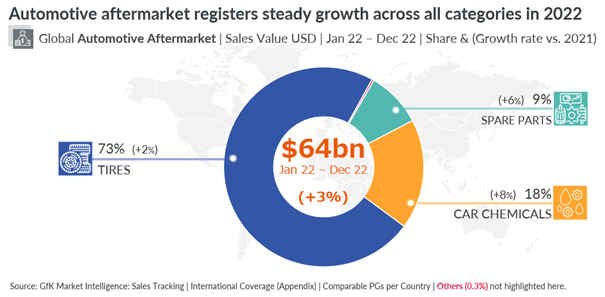
Dealers have also reported that stock levels have reached pre-pandemic levels, as most supply chain issues and material shortages have been resolved. This should help lower new car prices across the board, at least for non-EV models, but the lack of economically-friendly vehicles is apparent. Dealers have noted that the lowest inventory cars currently are smaller vehicles and crossovers.
The combination of all these factors indicates that 2023 is a critical time of growth for the auto parts and aftermarket industry, but – it may not last. With the looming adoption of EVs and stabilization of the new car market, the market for parts for used cars may slow, although according to a 2023 report on the automotive aftermarket by Houlihan Lokey shows that it’s a slow decline.
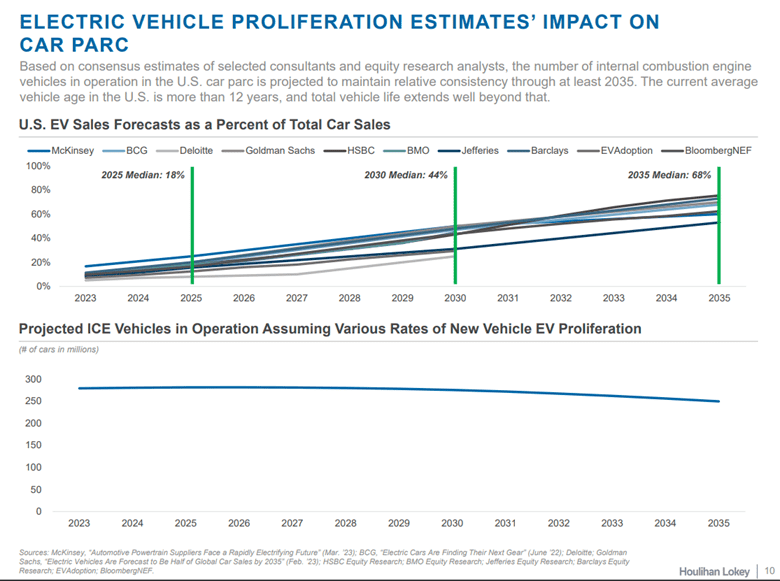
With electric vehicles looking to take over their internal combustion counterparts, components attributed to those vehicles may stagnate. It’s anyone’s guess as to how the transition to electric will play out, but with most automakers having at least one EV in their lineup, and lawmakers creating bills focused on electric adaption and infrastructure, it’s certainly not a far-off fantasy anymore.
Auto part and aftermarket distributors should look to capitalize on gas-powered vehicles before EV becomes dominant in the next 15-20 years. The majority of mechanical parts are not applicable to electric vehicles, as are many products. The difficulty of working on EVs due to proprietary components and high-voltage limitations may spell a decrease in profits for the industry – as many DIYers, enthusiasts, and non-dealership mechanics and garages avoid these vehicles for those reasons.
Starting line: WMS, WCS, and HMI
Knowing the mass of products needed to be received, stored, and shipped for an automotive distributor – the very first system implemented should no doubt be a proper warehouse management system. The sheer amount of product information requires it alone – an Excel sheet won’t save you here. Proper research and selection of a WMS that can handle such a vast catalog of items with ease is a must-have.
Since the majority of picking operations typically use warehouse associates in some way, it’s also recommended to include some form of WCS (warehouse control system) and an HMI (human-machine interface). A WCS allows disparate system equipment to communicate and share information with the main WMS. This expands the functionality of the WMS so each piece of equipment provides real-time statistics (throughput rate, alerts, device status, etc.), expanding visibility across your entire system.
An HMI is intended for warehouse operators to quickly understand the status of each link in your system, essentially taking the data from both the WCS and WMS and presenting it clearly to associates. Primarily focused on live product flow, pending tasks, errors, and more to-do events, an HMI is a worker-focused hub for presenting actionable jobs and monitoring of daily operations.
Operations for Varying Product Sizes
Automotive distribution centers deal with a vast range of products, each requiring specific handling procedures. Many vehicle parts can be conveyable, providing they don’t exceed the maximum average size of most conveyor systems and sorters (typically below 72 inches in width). For an automotive product and parts distribution center, the majority of orders can be fulfilled if e-commerce operations are present.
For non-conveyable items like exhausts, driveshafts, body parts, etc. automated guided vehicles (AGVs) can optimize throughput by reducing the costs and time associated with using a forklift operator. AGVs efficiently move products across the warehouse like an automated lift-truck and can handle oversized and heavy parts that a conveyor typically couldn’t.
Century’s recommendation? A combination of both would provide the highest level of automation, but a more realistic option would have your conveyable parts and products automated with a picking, packing, and sortation system, while moving and storing large items with a forklift. AGVs and warehouse robots would certainly provide increased throughput and efficiency, but the upfront cost of server activation and deployment of an AGV large enough to handle all non-conveyables may be a tough pill to swallow all at once.
Product Handled
Depending on the types of products that are being handled at your facility, receiving operations should be segmented by the size of the products being inducted.
Small items and cartons – sensors, cables, hoses, gaskets, fasteners, singular items. These items will need to be processed in a GTP (Goods-to-Person) operation for put-away or fulfillment. Pallets containing small items will have to be depalletized at an induction station, either manually or via a singulator/robotic arm. A belted conveyor can transport these small SKUs to be labeled for tracking in the WMS, and once scanned, an operator can place the item into a tote to be transported to storage.
Medium/large cartons – Engine parts, brake and suspension components, automotive chemicals, not to exceed 30”W x 80”L and 100lbs. These items will need to be depalletized and sent through a barcode scanner to determine if it can be shipped as is to the customer or diverted to a pack station for repacking or storage.
Non-conveyable – Oversized and exceedingly heavy items that cannot fit on a conveyor. Exhaust systems, driveshafts, engine blocks, transmissions, body panels and parts. These will have to be unloaded, typically by forklift, to a staging area for proper storage. Tires, which make up a significant portion of revenue with the industry, were typically considered a non-conveyable, but with recent advancements – some units can handle single tires under a certain size. The reason that tires aren’t a great candidate for powered conveyors is that traditional forklifts and racking come in at a much lower cost and are comparable in terms of product throughput and processing time. Tires are also often banded together in stacks of 4, which a conveyor could not handle in a stable manner. If automating a tire operation, consider AGVs/AMRs for optimal handling, or simple gravity roller conveyors so operators can push tires instead of picking them up.
Manual induction – Certain items may not be able to be sorted, either due to a no-scan or QA issue. These items will have to be manually inspected and reprocessed by an operator, so sortation systems will have to include a divert or two where these items can be sent.
Each product requires careful planning based on its size. Fully understand the range of items in your inventory and ensure that there is a corresponding operation to handle it accordingly.
Sortation
In a high-throughput facility, accurate and quick product sortation is key. Slat and shoe sorters are ideal solutions – Century has integrated large sortation lines such as the Hytrol ProSort for such applications, achieving success in maintaining high-speed distribution operations for cartons of various sizes and quick, but gentle diverts.
It goes without saying that every distribution center and facility is different, and that a solution in one facility may not work for another. If your facility uses polybags or bubble mailers for example, a shoe sorter system would not be a good solution as items that light and thin would get jammed. Instead, tray, belt diverts, or modular plastic sorters could be a closer fit for the product handled.
Take into consideration the course the product takes once it’s sorted. Chutes, gravity wheel conveyors, recirculation, dock extendables, and other equipment should all be considered depending on your trailer loading operations. Because of this, most large sortation systems are strategically placed closer to the loading doors, leaving space for forklifts and operators. If space is at a premium in your facility, sorters can be installed overhead – either on tall supports, a mezzanine, or supported by the ceiling.
Either way – a sortation unit is critical to ensuring fast order processing and shipping, especially for an auto part or product distributor that manages thousands upon thousands of different items per day.
Picking Optimization
The automotive distribution industry deals with a wide range of products, often requiring extensive storage space. Material handling systems, such as automated storage and retrieval systems (AS/RS), maximize space utilization. AS/RS uses robotics and computer-controlled mechanisms to store and retrieve products efficiently, optimizing storage capacity and reducing the need for extensive warehouse space. These systems can be costly, and should only be considered if you have a high SKU count and significant eCommerce operations.
A wide variety of picking modules are available – from mini-shuttle systems to cell-based pick walls. These systems can be fully or partially automated, or designed to be based around a single operator picking products from and to systems (receiving products from a picking shuttle, packing them, then outfeeding to a conveyor, for example).
The simplest and most cost-effective option would be ergonomic racking modules and shelves that make piece picking for fulfillment easy for warehouse associates. Flow racking for both cartons and pallets slot items in a shelving unit lined with gravity wheels, making retrieval easy. Pick cells can also be considered, as well as any number of container trollies on casters. Automation also comes in the form of empowering warehouse associates with picking technology – voice and vision pick, wearable scanners and terminals, picking light indicators, and other devices designed to assist operators. Century recently integrated ergonomic picking solutions for a convenience store product provider – another industry that manages a variety of SKU types.
Summary
Conveyors and material handling systems are integral components of the automotive product and OEM parts distribution industry. By streamlining material flow, increasing throughput, enabling efficient order fulfillment, facilitating JIT delivery, and optimizing storage space, these automation solutions have become indispensable for staying competitive in the fast-paced automotive sector.
As the automotive industry continues to evolve, embracing cutting-edge material handling technologies is vital to remain agile, efficient, and responsive to market demands. Conveyors and material handling systems empower automotive distributors with the tools they need to thrive in an ever-changing landscape, ensuring seamless operations and satisfying the demands of customers and manufacturers alike. With electric vehicles looming on the horizon, our recommendation is to implement a high-throughput automation system now while gas vehicles are still the dominant product, maximizing profits.



